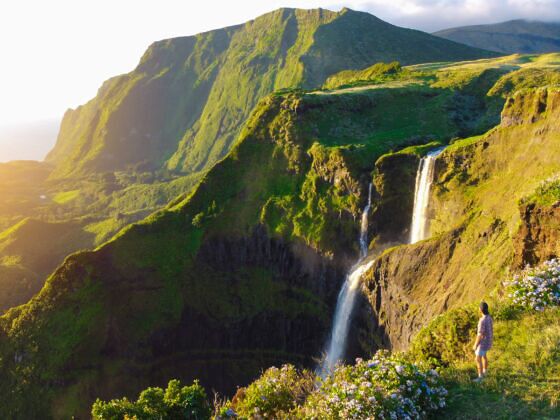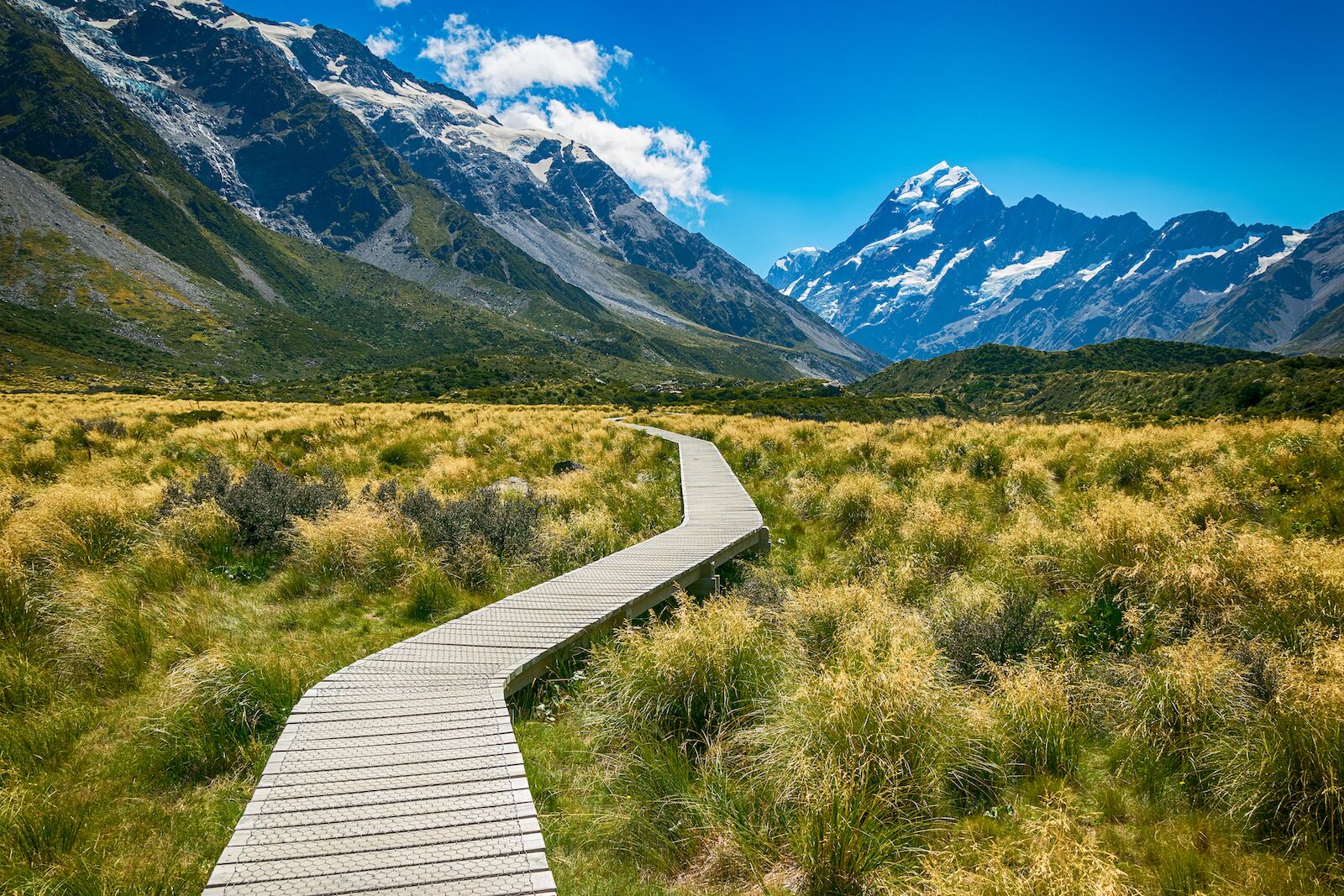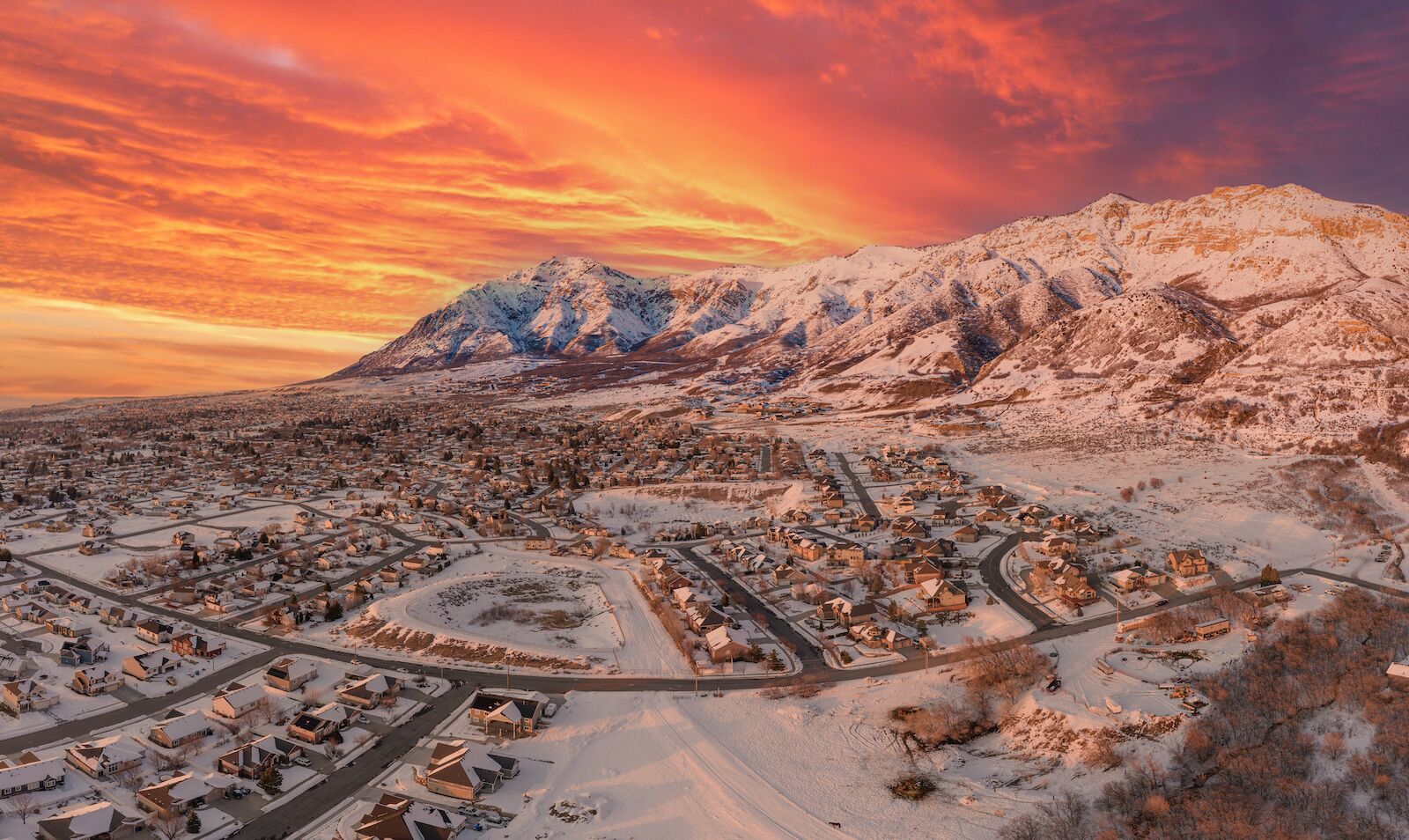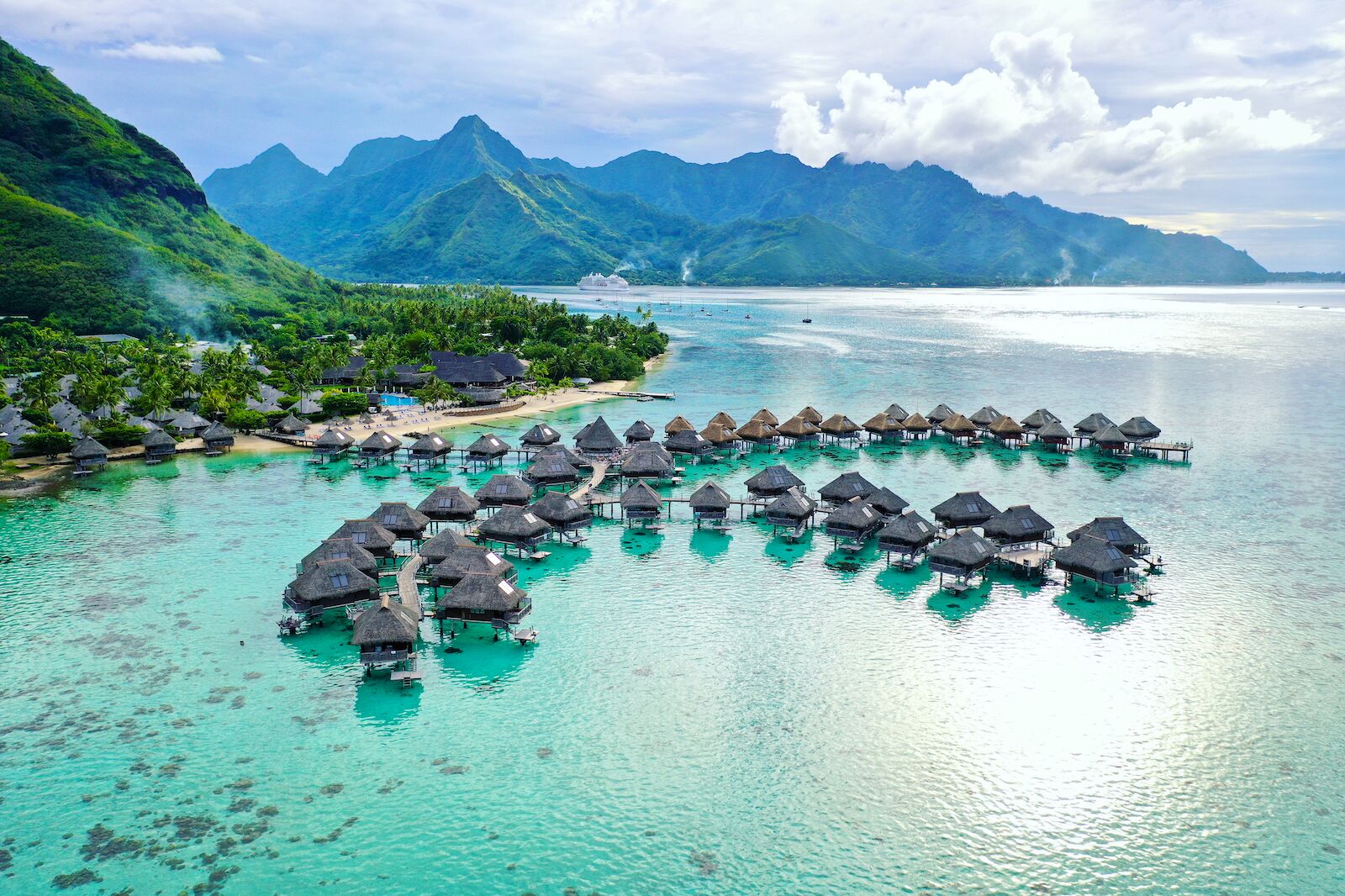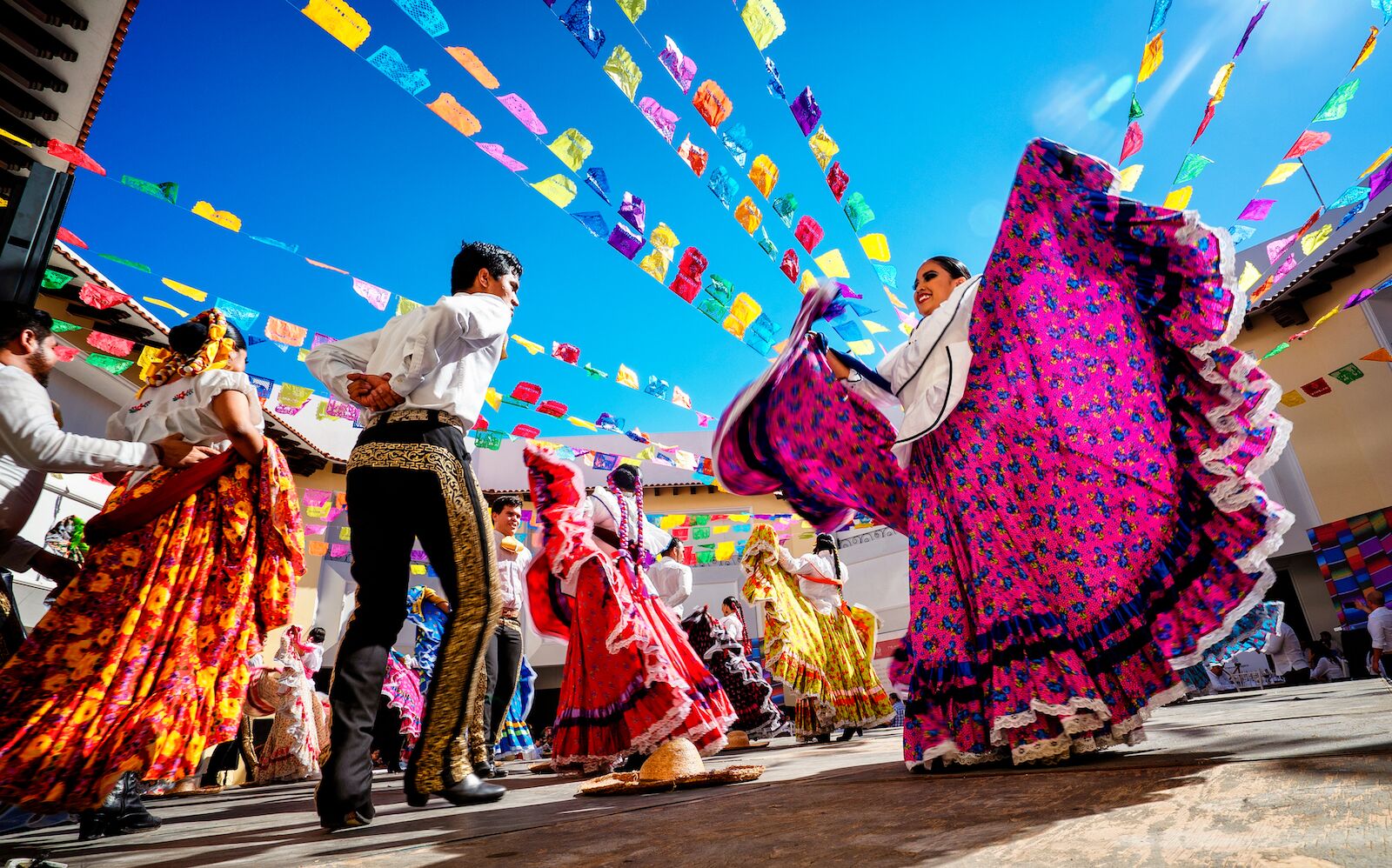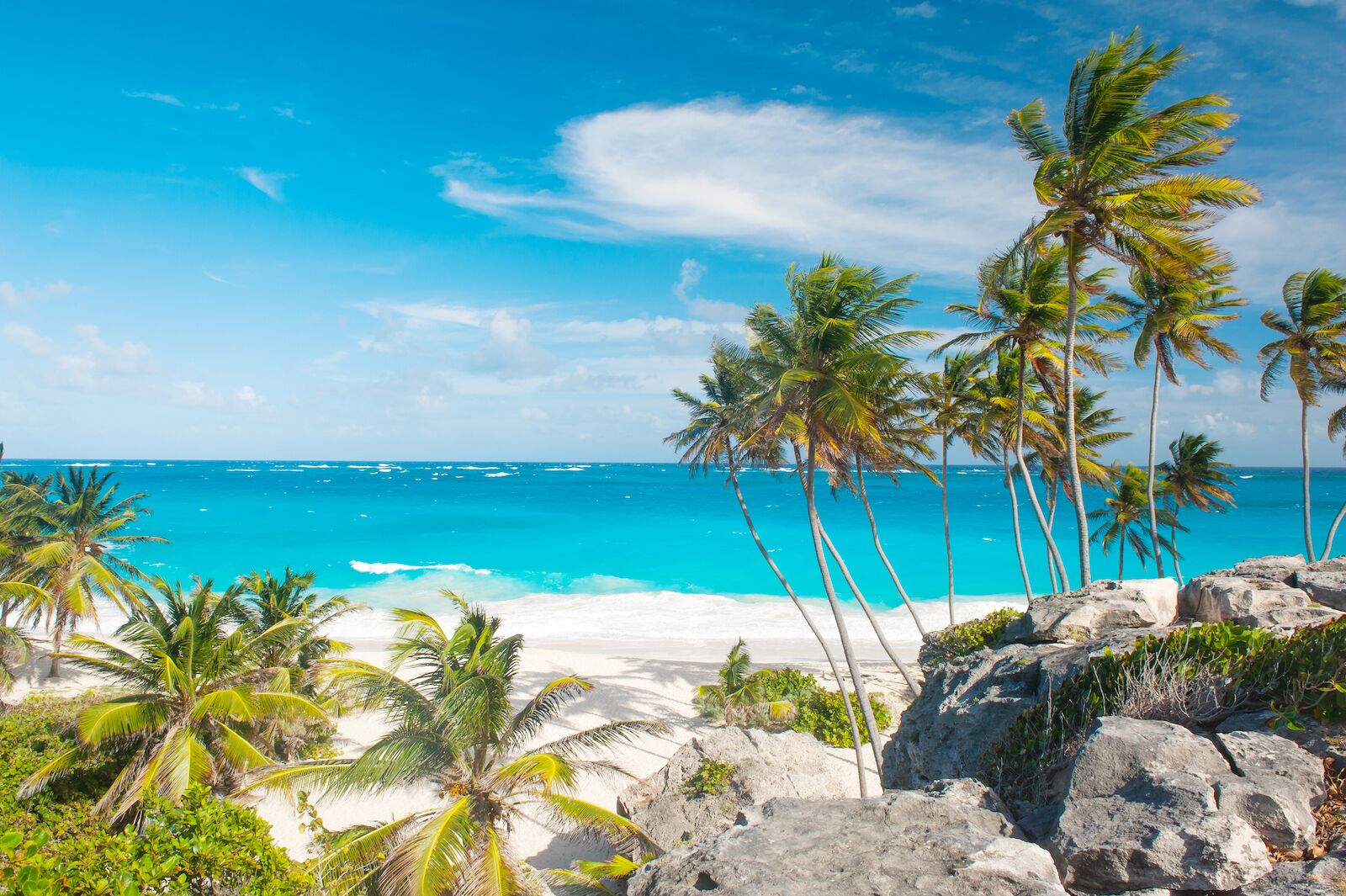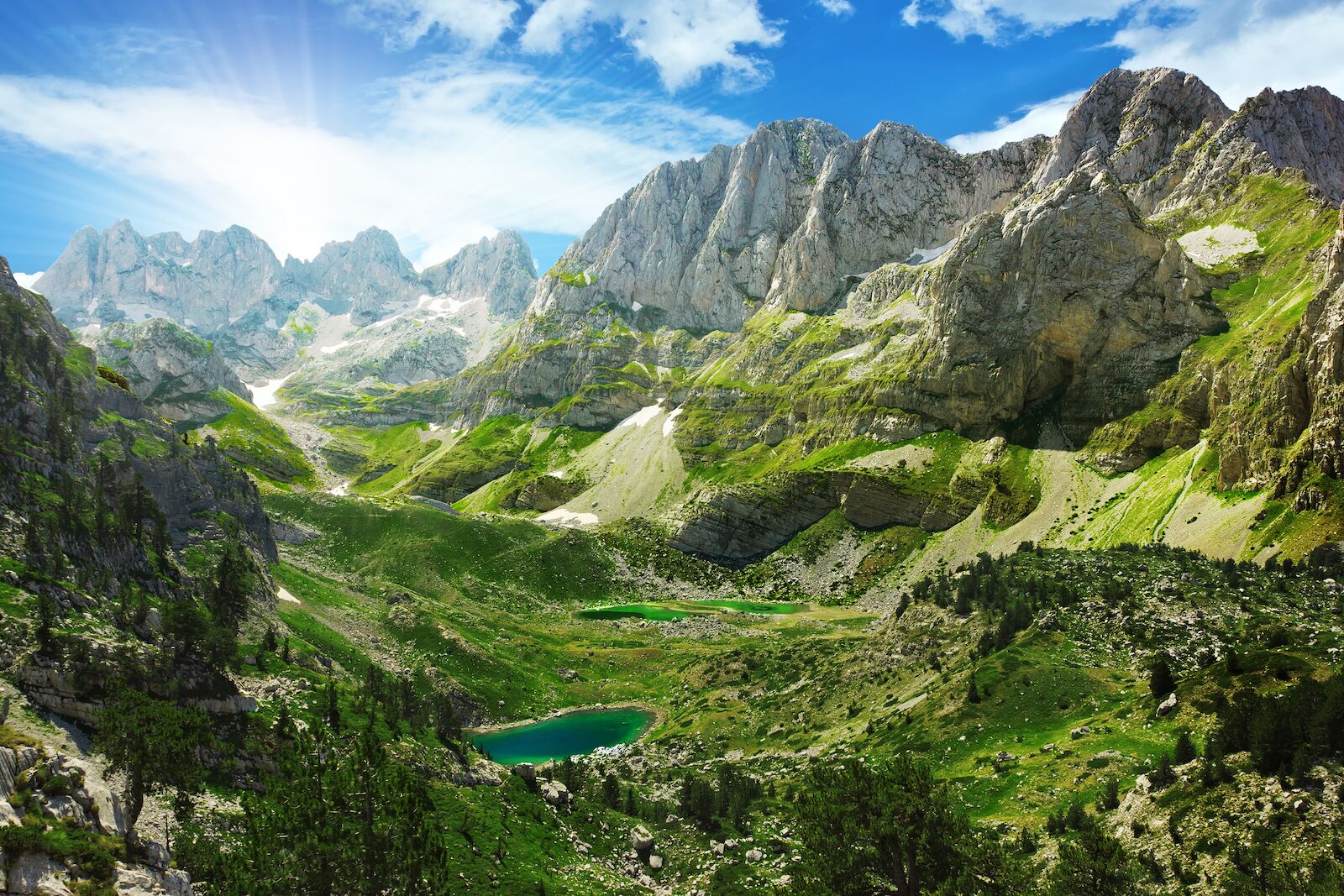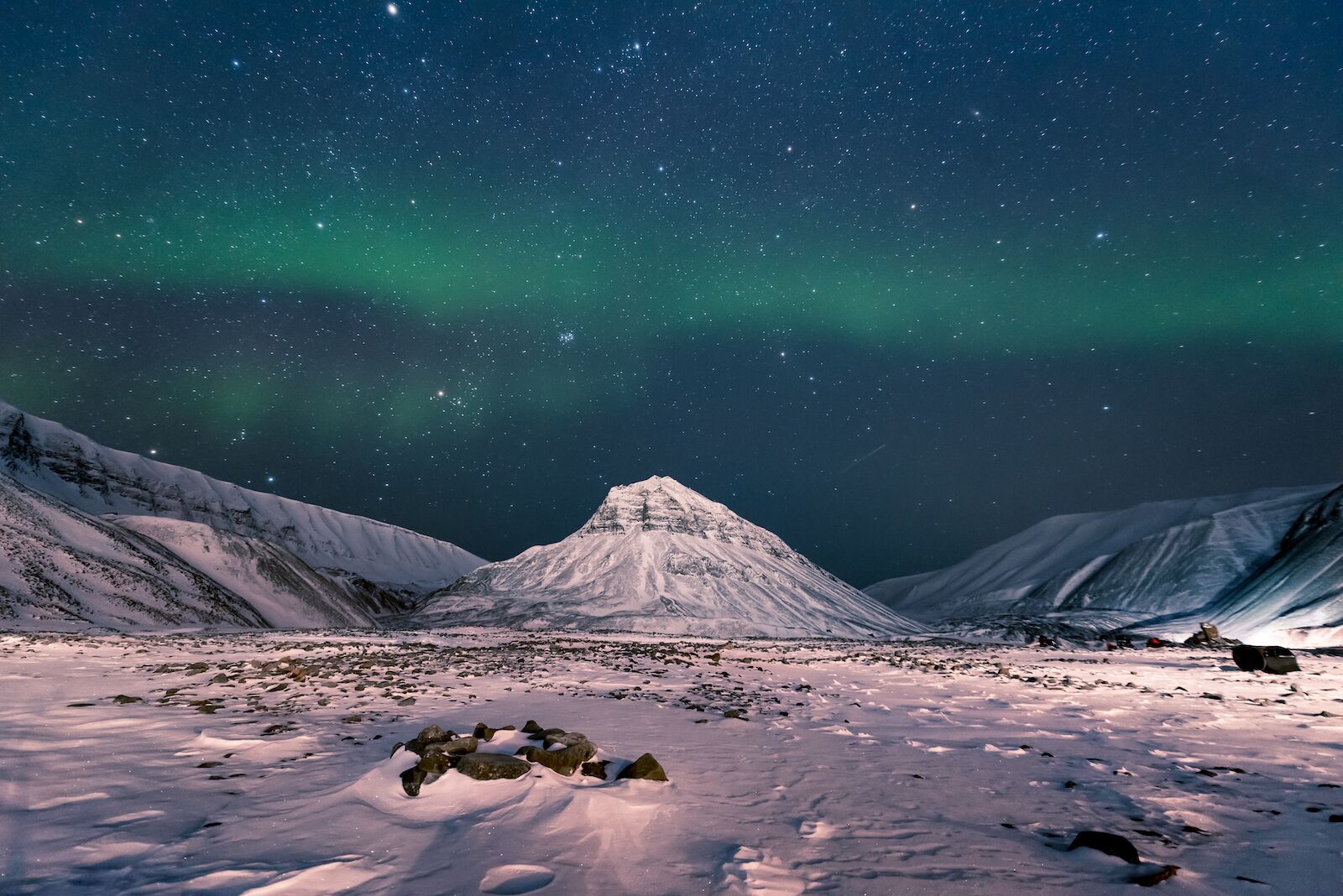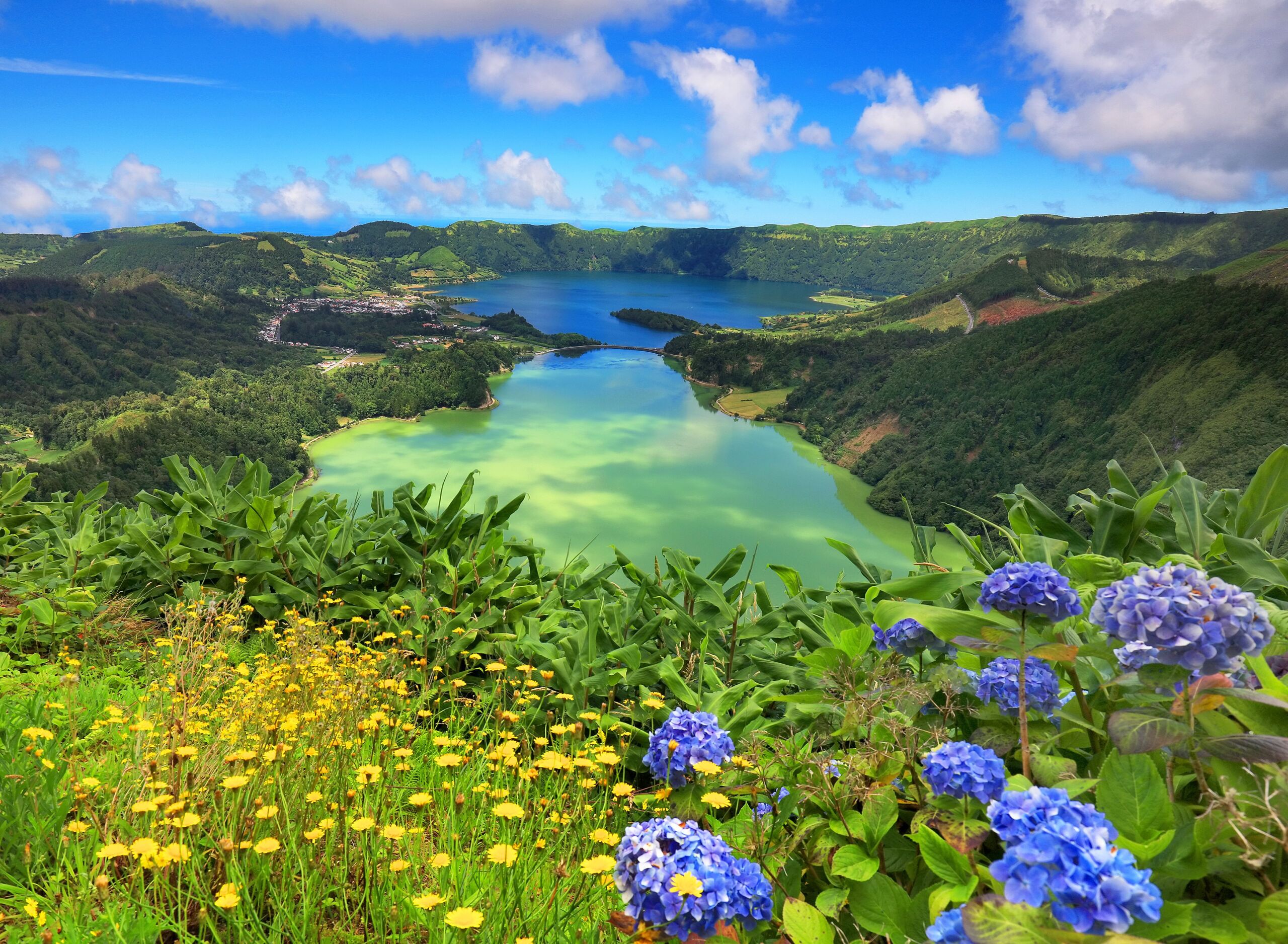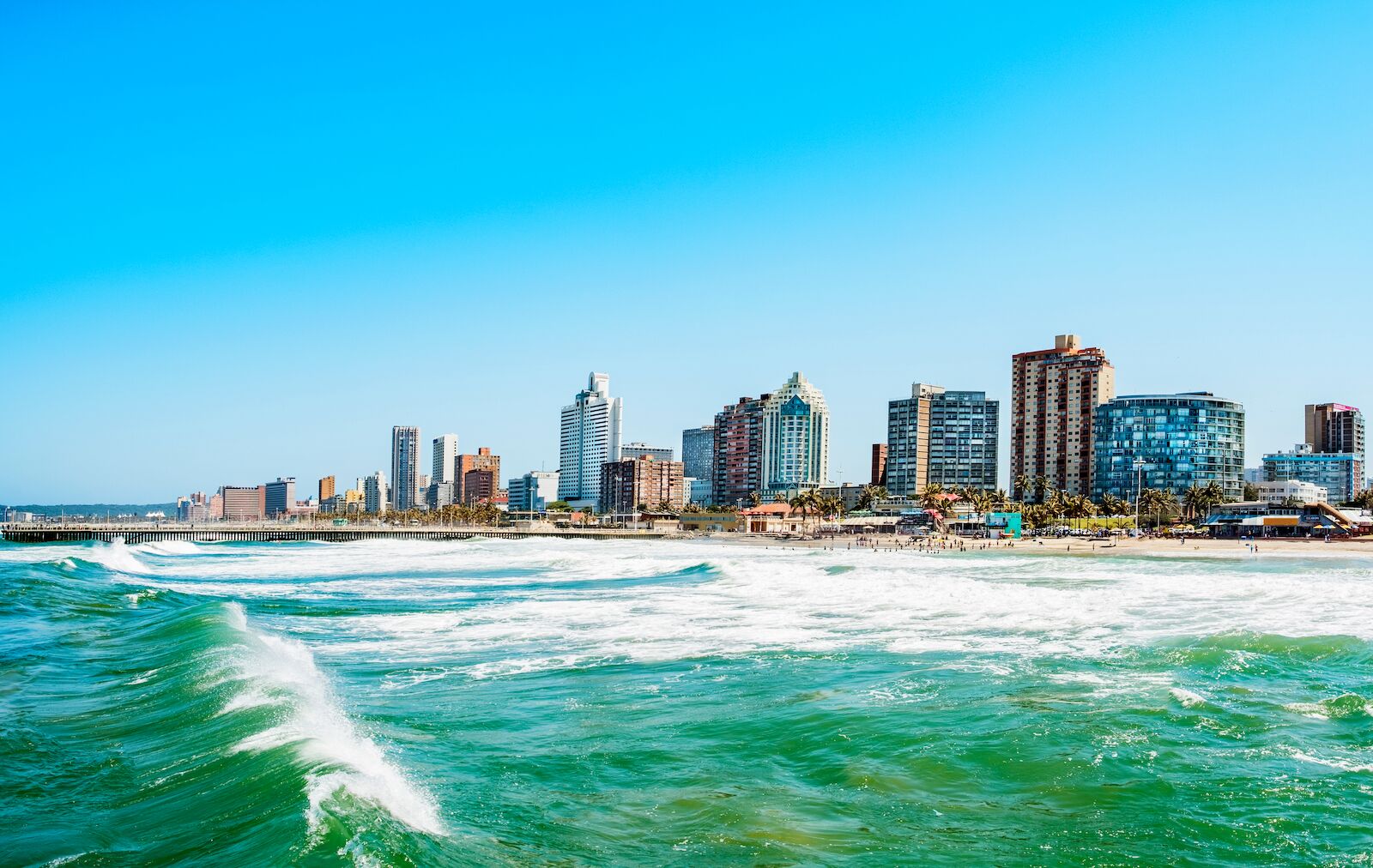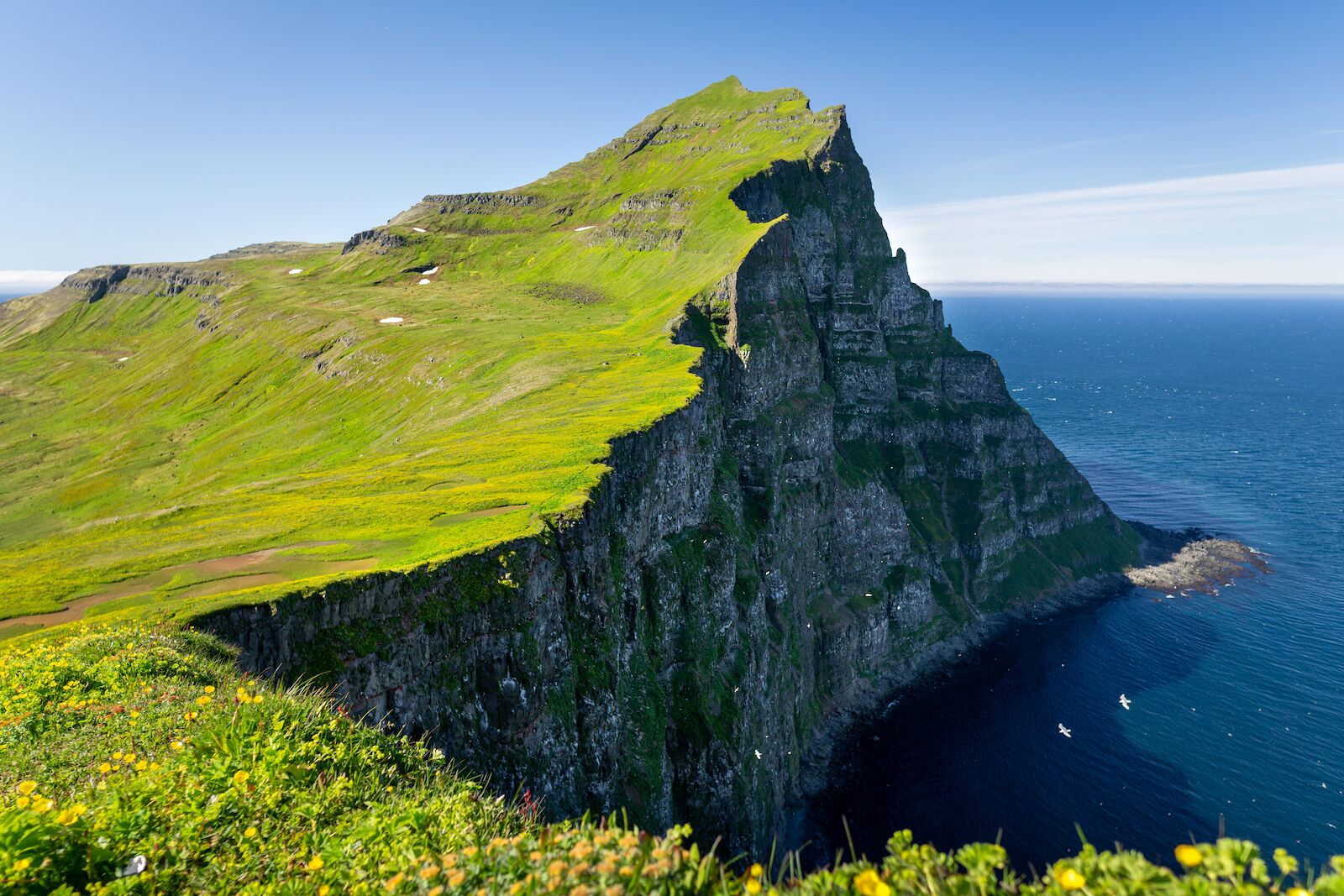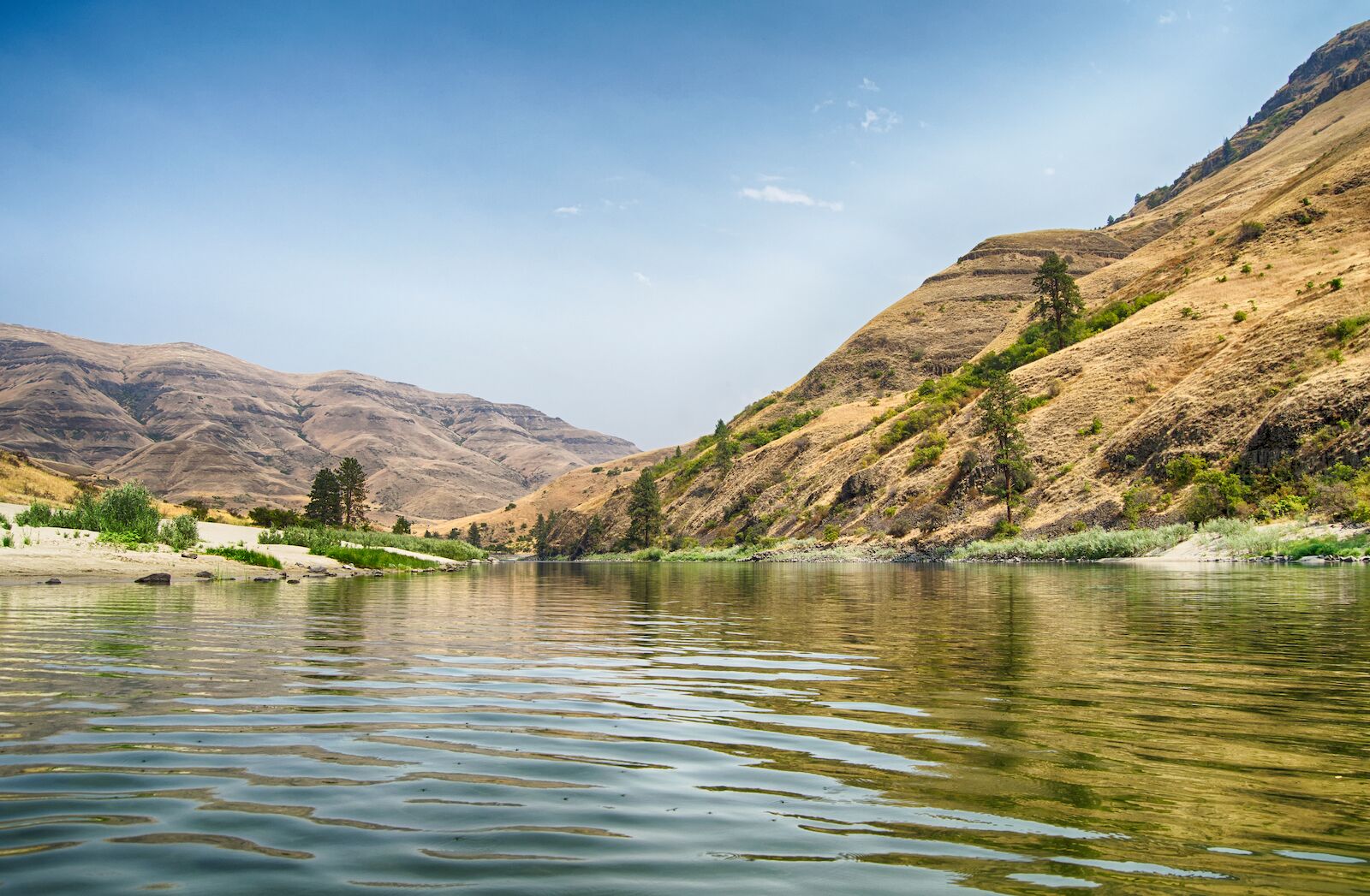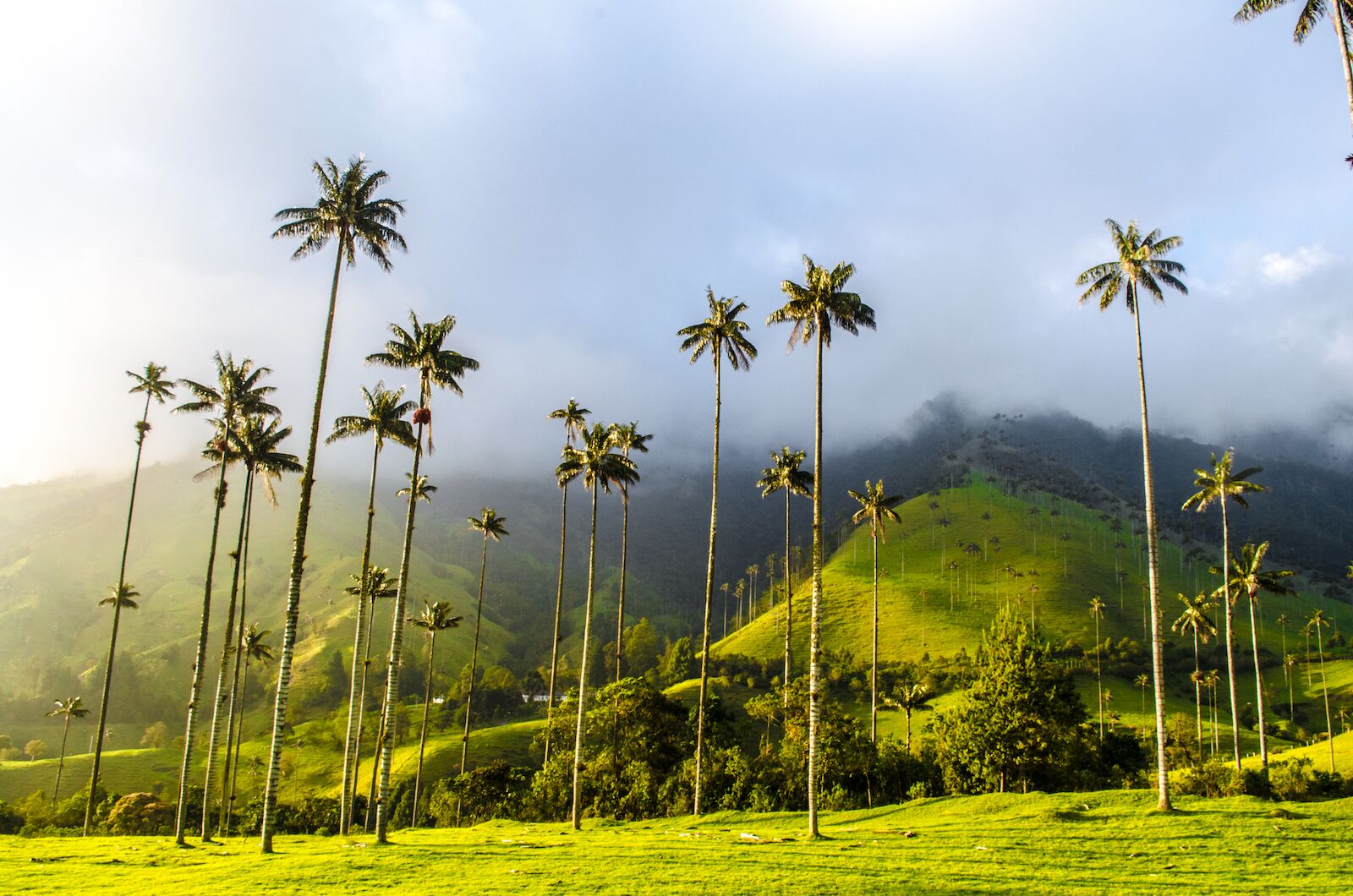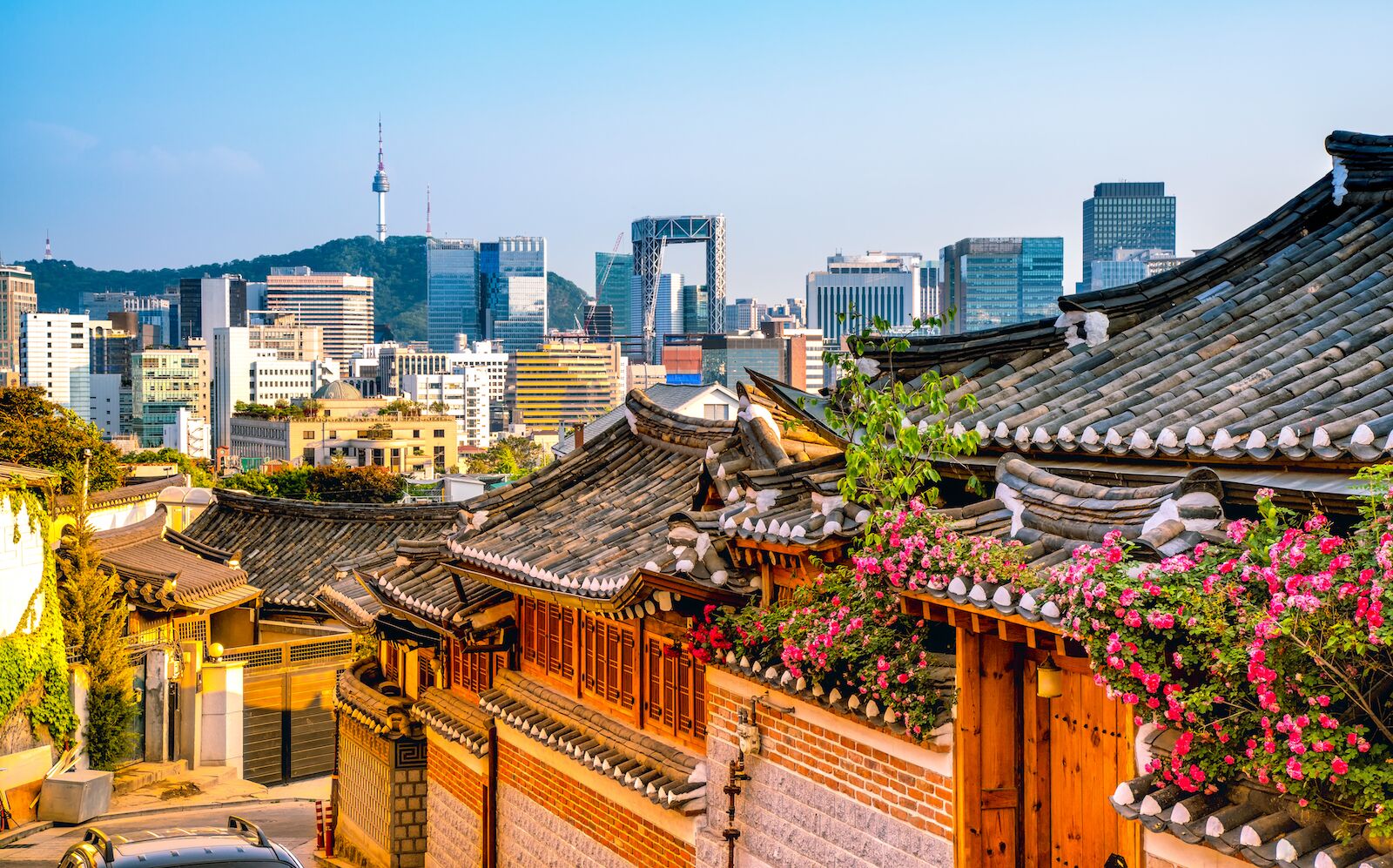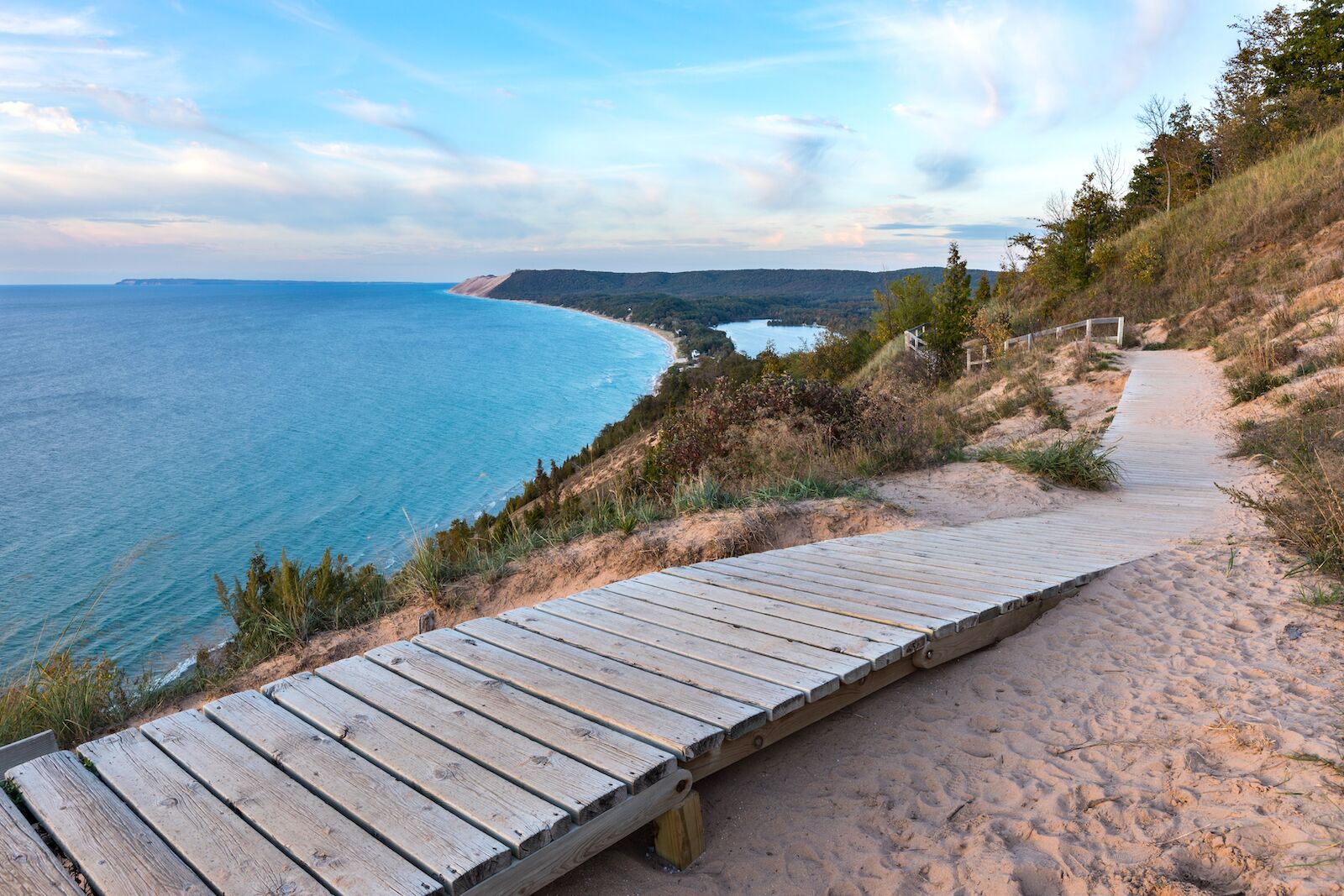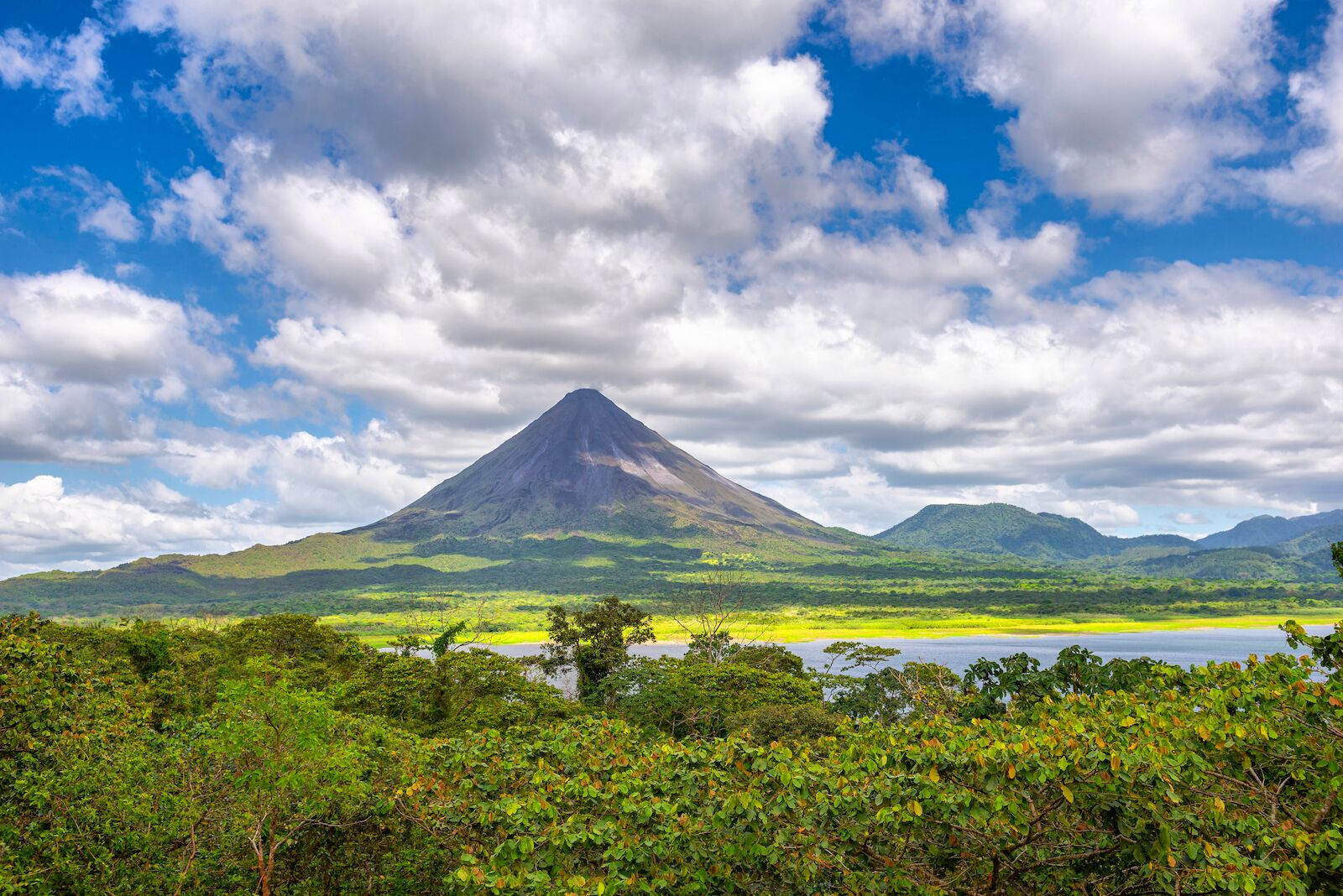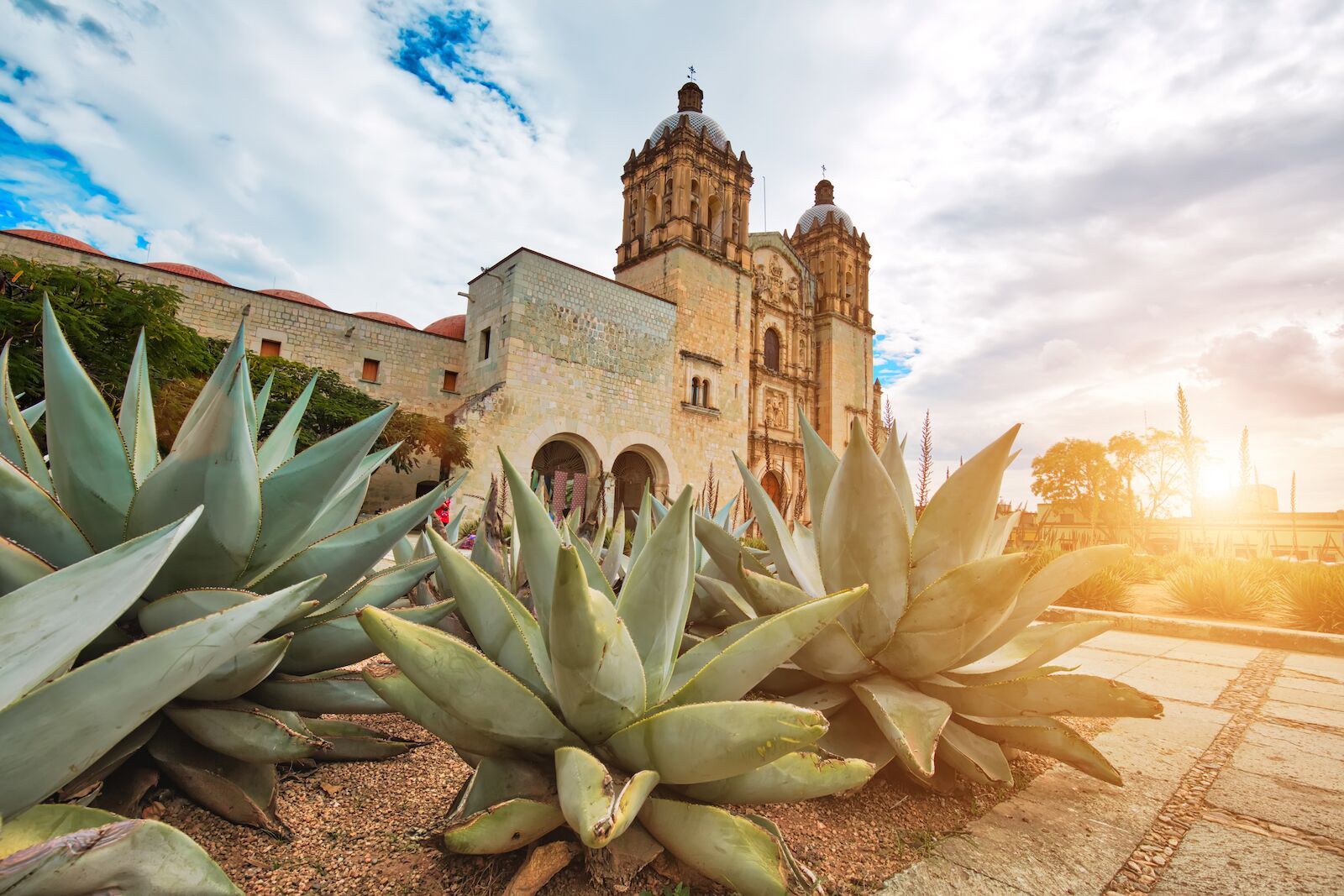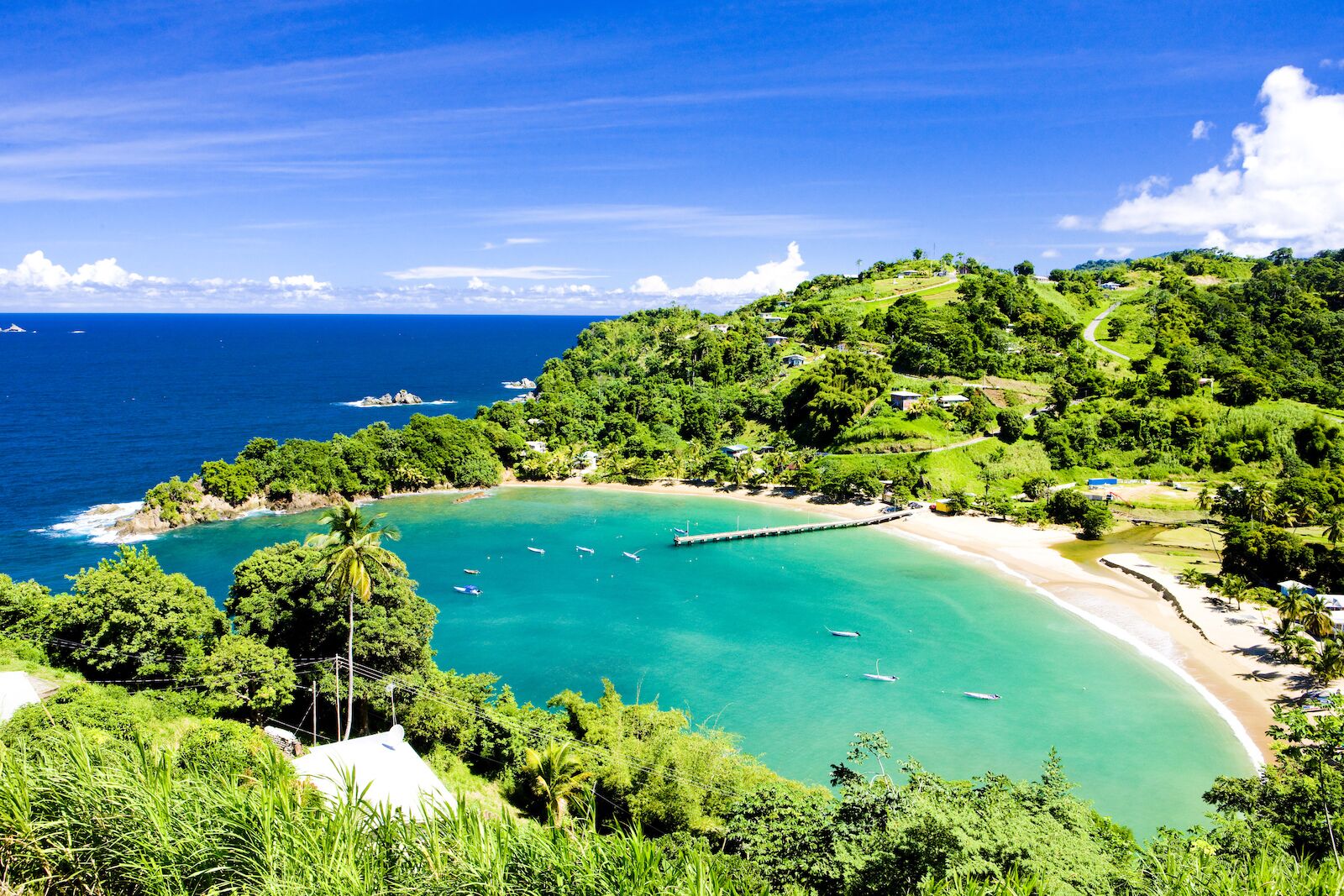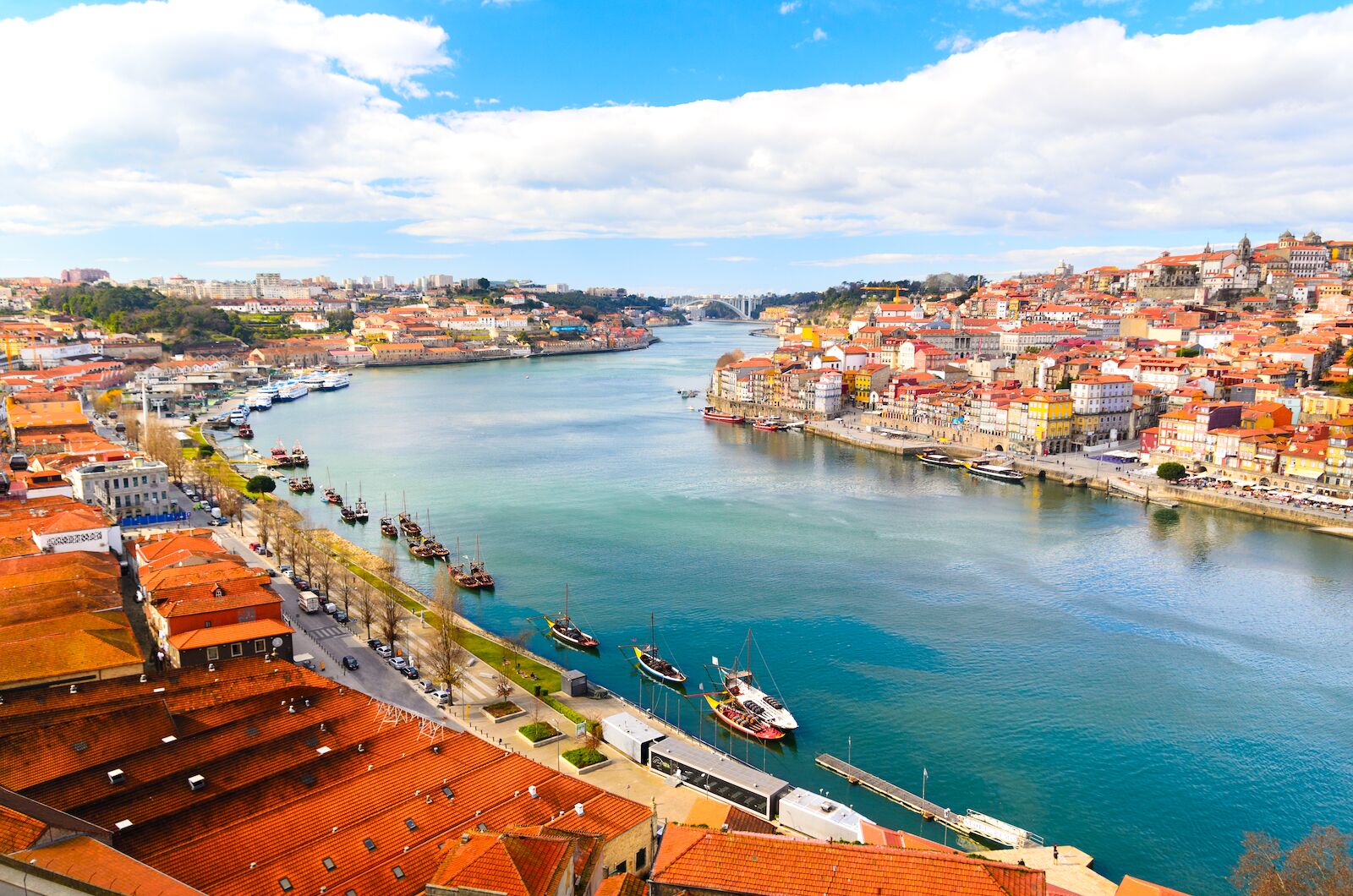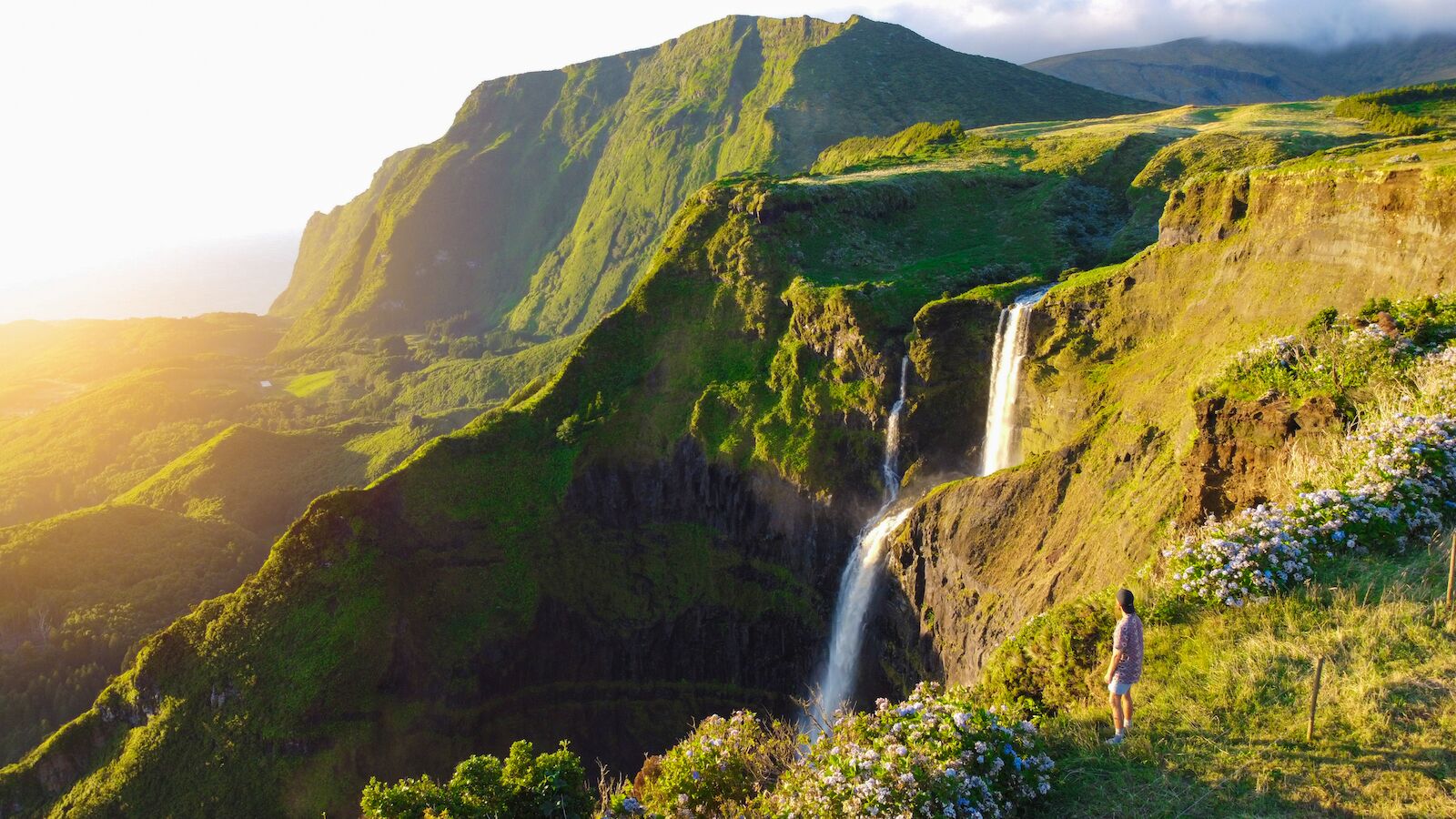
The 22 places you need to travel in 2022
The calendar is finally flipping to 2022, but unfortunately, we haven’t quite turned the page on the COVID-19 pandemic. Public health precautions are still in place in many countries around the world, and travelers still face various vaccination, masking, and testing requirements. That doesn’t mean we can’t still kick off 2022 with an epic vacation. From a glass-half-full perspective, the world’s borders are much more open than they were this time last year, and with vaccines widely available, you can jet around the world with greater peace of mind. Whether it’s lounging on a beach in Costa Rica, weaving through the wild roads of Iceland’s Westfjords, or celebrating the Lord of the Rings’ 20th anniversary in New Zealand, these are the best places to travel in 2022.
Editor’s note: These entries were written by Alex Bresler, Eben Diskin, Olivia Harden, and Tim Wenger, with nominations from the entire Matador Network staff.
1. New Zealand
New Zealand’s magnetism was cemented long before COVID-19 travel restrictions turned the can’t-miss destination into a can’t-visit daydream for the majority of the global population. Peter Jackson’s Lord of the Rings franchise certainly helped solidify the country’s topographical appeal, showcasing mammoth mountains, snaking fjords, and fantastical farmlands that were born for big-screen superstardom. Now, after a nearly two-year travel ban, to paraphrase an iconic line from The Two Towers film: “Looks like New Zealand’s back on the menu, boys!”
At the time of publication, New Zealand is slated to reopen to fully vaccinated travelers on April 30, 2022, just in time to see locales like Hawke’s Bay, Wanaka, and Lake Tekapo awash in autumnal hues. Can’t decide what you want to do most? Consider a legendary South Island road trip, starting in remote Abel Tasman National Park, seeking thrills in Queenstown, cutting through wine country, and ending in the rugged coastal Catlins. Or perhaps you’d prefer a romp across the North Island, from Whangārei Falls to Hobbiton, geothermal Rotorua, and Tongariro National Park, with a wind-down in Wellington, which some say is New Zealand’s most underrated city. We hear bioluminescence is going to be big this year, too, so you’ll probably want to carve out a stop near Auckland around high tide.
From being catapulted across the Nevis Valley like a human slingshot to endeavoring a Great Walk or booking a gentle train journey on the TranzAlpine Railway, New Zealand has travelers of all outdoor persuasions covered. And with a new Tolkein adaption set to hit our TV screens in September 2022, wouldn’t it be cool to binge with an intimate knowledge of Middle Earth?
2. Ogden, Utah
Ogden, Utah, is a beacon of what small cities across the American West should strive to be. With a population of 90,000, the city is using smart, managed growth to become a hub for small businesses and outdoor recreation.
The city’s historic center runs along 25th Street. It’s lined with former brothels that have been turned into pubs, restaurants, and outfitters that pay tribute to Ogden’s past while simultaneously looking ahead. Ogden is also a pilot city in Utah’s clean energy program. The ambitious destination is working to derive 100 percent green energy by 2030 — 20 years ahead of the US target.
Surrounded by trail systems catering to hikers and bikers of all levels, Ogden is an obvious choice for outdoor recreationists, and its Wasatch-adjacent location positions it near two top-tier ski resorts. Post adventure, you’ll find the best suds in Utah at Ogden River Brewing and Rooster’s.
3. Mo’orea, French Polynesia
Bora Bora may be the bigger name in French Polynesia, but Mo’orea is the one that should be on travelers’ lips. Replete with all the natural beauty of its sister island, Mo’orea promises a more laid-back experience than its over-touristed neighbor. And instead of being forced to shell out for a costly seaplane, you can reach the island by ferry in roughly the same amount of time.
On the island, you’ll probably be tempted to beeline to the beach, where you can either lounge blissfully or engage in watersports like snorkeling and jet skiing. But the offshore opportunities are just as exciting, from hiking 40 minutes up Magic Mountain to exploring caves and ancient ruins. If you love animals, Te Mana O Te Moana also makes the list. There, rescuers work hard to rehabilitate and release sea turtles that have been harmed by human activity.
Once you’ve worked up an appetite, it’s time to sample the region’s signature dish: poisson cru, which roughly translates to “raw fish” and is both succulent and sustainable. You can find the ceviche-like delicacy almost anywhere on the island, but rumor has it Snack Mahana’s version is the best in the world.
4. Istanbul, Turkey
Between the new Istanbul Airport, which is poised to become the world’s largest upon its completion, and the Galataport megaproject that opened earlier this year, all proverbial roads lead to the Turkish capital in 2022. The latter is particularly exciting for the city. In addition to creating a brand-new port for cruise ships to dock in the Bosphorus, the multi-use property has brought a new arts and culture center to Istanbul’s already trendy Karaköy neighborhood.
Karaköy sits across the Golden Horn from Istanbul’s Old Town, where Ottoman landmarks like the Blue Mosque and Topkapi Palace brush up against Byzantine monuments like the Hagia Sophia. The streets on either side of the Galata Bridge that connect these two districts are some of Istanbul’s most trafficked, from the 61 lanes of the Grand Bazaar that snake through the walled city to Beyoğlu’s Istiklal Caddesi, or Independence Avenue, which runs from Taksim Square to Karaköy’s Galata Tower and can see as many as three million visitors in a single day. From there, head 15 minutes east along the Bosphorus and you’ll wind up in Beşiktaş, whose historic Çırağan Palace is now a luxury hotel that makes for one of the most unforgettable stays in town.
These neighborhoods alone could sustain a week’s worth of travel in the Turkish capital, but Istanbul’s highlights hardly scratch the surface. Home to more than 15 million people, the metropolis can’t even be contained by just one continent. It’s split between Europe, where most of the major attractions are located, and Asia, where the majority of residents actually live. Travelers would be remiss not to cross the Bosphorus while visiting. The city’s underrated Asian side has just as much charm as its European counterpart, from the fish market in Beşiktaş to Kadıköy’s antique shops and Moda’s many coffeehouses, both traditional and contemporary.
It’s hard to conceive of just how big Istanbul is until you get there. Even then, the city seems to unfold infinitely. And it’s only getting more impressive given the recent push for urban redevelopment. Unless you’re planning to stay for months, it’ll be near-impossible to see all the sights, sample all the delicacies, and savor all the culture you’ve been obsessing over from afar, whether that’s bathing at a Turkish hammam or eating at one of Salt Bae’s steakhouses. But go now, and you can always put Istanbul back on your bucket list for 2023.
5. Puerto Rico
For US travelers eager for a long-awaited vacation, but still nervous about long-haul travel, Puerto Rico is the perfect place to get your feet wet. Plenty of outdoor spaces to explore means you don’t have to try very hard to socially distance, and Puerto Rico has one of the highest vaccination rates of the United States and its territories. Whether you’re staying in San Juan or on the rugged west coast, there’s no shortage of ways to stay busy in Puerto Rico.
A great place to start is El Yunque National Forest, a rainforest just an hour from San Juan near the east coast of the island. Hikers should check out the trek up to Mount Britton Tower and the El Yunque Rock Trail, both of which offer impressive views of the forest all the way to the coast. Don’t leave without following the El Angelito Trail to the Mameyes River. At the end of the trail, you’ll find a rope swing you can use to dive right into a swimming hole.
If you’re looking for a solid base for your Puerto Rico trip that avoids the hassle of crowds, it doesn’t get better than Rincon. On the west coast of the island, the small town of Rincon is a surfer’s and sunbather’s paradise, home to some of Puerto Rico’s most beautiful (and hidden) beaches. Domes Beach, Maria’s Beach, Tres Palmas, and Steps Beach are all accessible from Rincon. The town is also home to some of the island’s best whale watching. During the winter, whales pass close to the shore as they migrate, and you don’t even have to board a boat to see them — just climb the Punta Higuero Lighthouse and take in the views.
Even crowd-averse travelers may want to spend an afternoon in Old San Juan, a neighborhood in the capital city that’s defined by colorful buildings and cobbled streets. Its most famous landmark is Castillo San Felipe del Morro, a fortress on a piece of land jutting out into the ocean. There’s also Castillo de San Cristóbal and the Santa Maria Magdalena de Pazzis Cemetery overlooking the water — a more peaceful and scenic cemetery experience than you might think.
6. Puerto Vallarta, Mexico
The decision to visit Mexico is an easy one. Deciding where to spend your precious vacation days while there poses more of a challenge. Until Puerto Vallarta makes the shortlist, that is.
Puerto Vallarta is among the most popular resort towns on Mexico’s Pacific coast. And for good reason. Its world-famous beaches are swaddled by lush Sierra Madre mountains. Its cuisine features the best of both land and sea, from ceviche fresh from Banderas Bay to juicy birria tacos. The art is vibrant, the cobblestone streets are lined with charming tiendas, and there’s a thriving LGBTQ community that makes Puerto Vallarta inclusive for all travelers.
Plan to visit between November and May to ensure you’re getting the best weather throughout your stay. You’ll appreciate the sunshine as you zip across the longest suspension bridge in the world for vehicles, the Jorullo Bridge, in an ATV. After, refuel alfresco at Gaby’s Restaurant in El Centro, Puerto Vallarta’s entertainment hub.
From there, you’ll have easy access to the city’s malecón, or boardwalk, where you’ll see street performers mingling with sunbathers, sand sculptures decorating shore, and local shops and restaurants anchoring all the activity. Settle in here for sunset, or use the last minutes of daylight to continue your walking tour, stopping to admire the city’s myriad Frida Kahlo murals all aglow.
7. Saudi Arabia
If the new year is a time for turning over a new leaf, there’s no better example than Saudi Arabia. The country may not typically come to mind as a tourist destination, but if the Saudi crown prince has anything to say about it, that’s about to change. The Saudi government is undertaking a massive campaign to attract tourism and ease any concerns travelers may have about visiting. There are two major projects at the heart of their campaign to woo travelers: AlUla and NEOM.
AlUla, in northwestern Saudi Arabia, is defined by its preserved tombs, sandstone outcrops, and historic monuments. That includes the Nabataean city of Hegra, Saudi Arabia’s first UNESCO World Heritage site; the remains of the North Arabian Dadanite and Lihyanite Kingdoms; and AlUla Old Town, a pilgrimage site dating back to 1100.
The ancient city of Hegra is one of AlUla’s most impressive tomb complexes, carved into the sandstone rocks in the desert over 2,000 years ago by the Nabateans. There are a total of 111 tombs, many of which have facades decorated in intricate detail, much like the ancient city of Petra built by the same civilization. Since the site isn’t yet a booming tourist destination, you might even have the place all to yourself.
AlUla’s Old Town is another area of the city worth exploring. This ancient medina, a walled neighborhood with labyrinthine streets, has been abandoned since the 1980s but is now restored to look as it did in the 12th century. Old Town is defined by its mudbrick houses, winding alleyways, and the famous Masjid al-Izam, a restored mosque once visited by the Prophet Muhammad.
The other lynchpin of Saudi Arabia’s major tourism push is NEOM, a futuristic city being developed in the Tabuk Province near the Red Sea. Slated for completion in 2025, NEOM, which translates to “new future,” is being designed as an ultra-sustainable urban oasis and being built in a long thin line to give residents easy access to nature at all times. It will be the world’s first “smart city,” using cutting-edge technology to make it as convenient as possible for residents. This includes things like traffic monitoring, efficient urban planning, and a power grid of 100 percent renewable energy.
You’ll have to wait until at least 2025 to see the futuristic city in all its glory, but in the meantime, the surrounding region has lots to offer visitors. There’s a reason the Saudi government chose this corner of the country as the location for its most ambitious project. Explore the beautiful Wadi Tayeb Assam, or Valley of Moses; check out the biblical Oyun Musa springs; and go diving in Saudi Arabia’s coral reefs.
8. Barbados
Barbados has a lot to celebrate in 2022. The Caribbean island officially became a republic this past November, swearing in its first president and ousting Queen Elizabeth II as its head of state 55 years after gaining independence from Britain.
You could pop by for vacation — and with an all-white coastline and some 1,500 rum shops peppered across the island, who wouldn’t want to visit Bim, as it’s affectionately known — but ever since the launch of the Welcome Stamp visa that lets remote workers stay for a year, Barbados has become a top spot to snag an oceanfront Airbnb and embrace digital nomadism. No guarantee you’ll get any work done with eight months of surf, mile-wide lookouts, and a must-ride rum train to distract, but hey, that’s on you.
If you’re short on time, come during summer for the epic Crop Over festival. Once a celebration of the last sugar cane harvest, the annual event is now a three-month carnival filled with street fairs, non-stop dancing, outrageous costumes, and all-out revelry soundtracked by soca and calypso music, culminating in a Grand Kadooment Day parade, to be held August 2 in 2022.
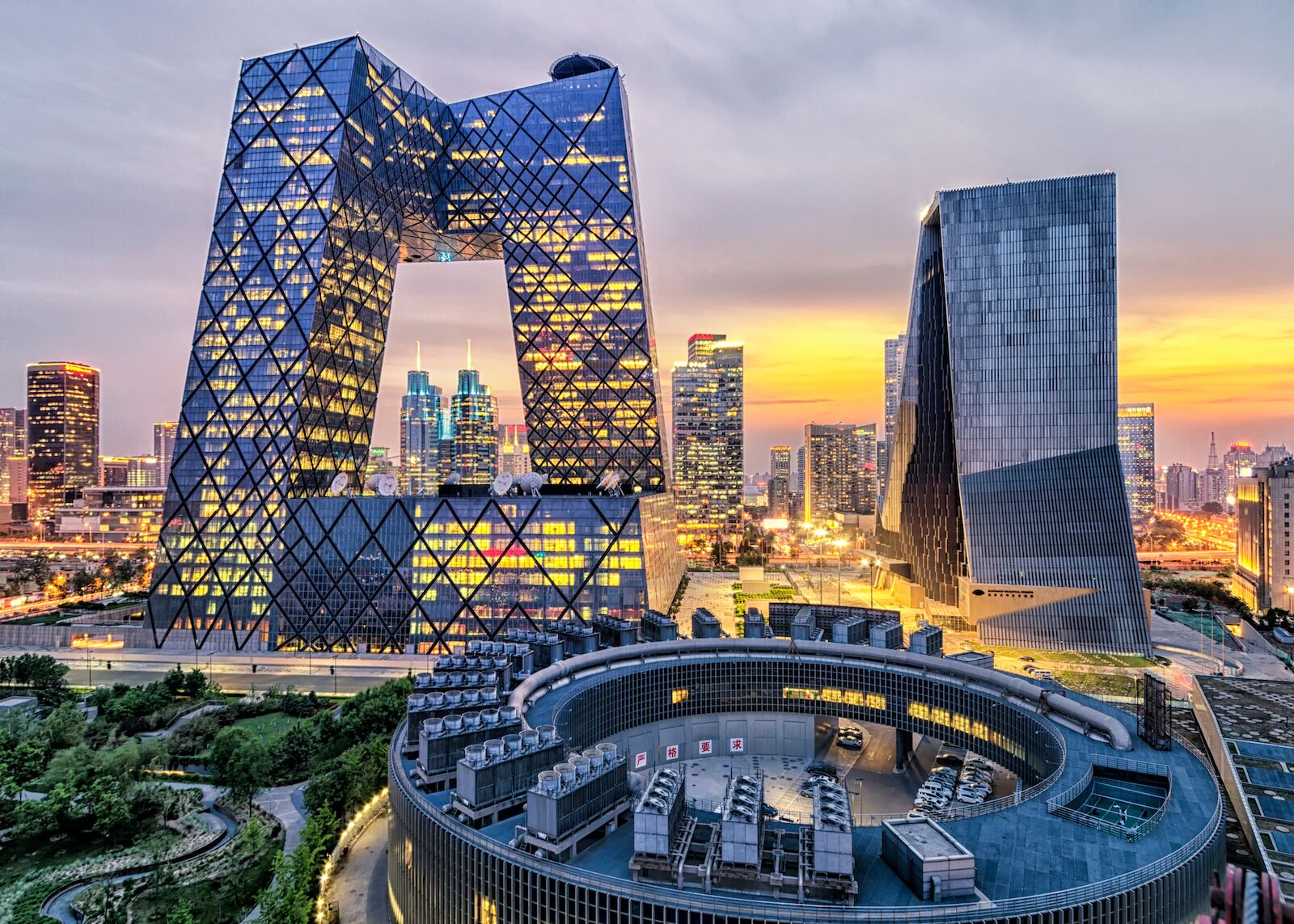
Beijing, China
9. Beijing, China
Beijing is hosting the 2022 Winter Olympic Games — though not without controversy — shedding a spotlight on the world’s most populous country and its politics. The US recently announced a diplomatic boycott of this year’s Winter Olympics, and due to COVID-19 restrictions, international spectators aren’t allowed at the games. But you can still explore all Beijing has to offer. The city is home to historic temples, a surprising abundance of green spaces, and plenty of Airbnbs for every kind of traveler.
We tend to think of Beijing as a sprawling megalopolis with factory smoke hanging in the air, and green spaces as rare as the country’s access to Facebook. But fresh air is easier to track down in the city than you might think. Just west of the city sprawl you’ll find XiangShan Park, defined by its hills, trees, and mountain peaks. There are two cable cars in the park — one passes Spectacles Lake and Bright Temple while the other brings you over Fragrant Temple and Xianglu Peak.
Just off the Fifth Ring Road, you’ll find the Beigong National Forest Park. It’s tough to believe this place is only 45 minutes from the city, as you’ll truly feel immersed in nature here. Hiking paths lead to 1,300-foot peaks with views of the Yongding River, and beyond that of Beijing itself. Though it sits on the doorstep of the city, you’ll also find plenty of wildlife and birds.
If you’d rather remain within city limits, there’s still plenty of peace and quiet to be found. Get away from the busy city streets by visiting one of Beijing’s awe-inspiring temples. Philosophy buffs should check out the Confucius Temple, the second largest Confucian temple in China, dating to 1302. It was built so people could pay their respects to the great philosopher and was used for that very purpose until the early 20th century. Its most famous landmark is Chujian Bai, or the Touch Evil Cypress tree, which dates back several hundred years.
For a temple experience that will keep you busy all day, visit the Temple of Heaven, a UNESCO World Heritage site complex with 92 buildings and 600 rooms total. Built in 1420 by the same architect responsible for the Forbidden City, it’s the world’s largest building complex for offering sacrifices to heaven — but don’t worry, its sacrificial days are over.
10. Albania
First it was Croatia. Then it was Montenegro. It’s only natural that Albania should become the next Southeastern European hotspot that has travelers flocking to the Balkan Peninsula.
Albania straddles the Adriatic and Ionian Seas, sharing a coastline with Dubrovnik’s mesmerizing Game of Thrones filming locations a few hours north and Greece’s western border to the south, with speed boat trips to Corfu taking just 30 minutes. Inland, Albania is home to its very own Alps, where the Theth and Valbona national parks hide electric-blue lakes and rivers beneath craggy peaks, and the landscape is stitched together by miles of family farmland.
Aristocratic families from the Venetian period also bestrewed Albania’s countryside and coast with castles. Though their edges are now worn, many of these fortresses are surprisingly well preserved — notably Krujë, Rozafa, and Lëkurësi. The port city of Durrës also has a castle, though it’s the massive Roman amphitheater most travelers come here to see. Even more impressive is the ancient city of Butrint, a UNESCO World Heritage site located in a national park of the same name, whose own Hellenistic theater still hosts performances every summer during the Butrinti festival.
Not all of Albania’s architecture is old. In the capital city, the eponymous Pyramid of Tirana is among the country’s most fascinating landmarks. Originally built as a museum honoring longtime communist leader Enver Hoxha in 1988, the structure later spent stints as a post-communism conference center, NATO base during the Kosovo War, and broadcasting center for Albanian media. As of 2018, the most recent plan for the pyramid is to transform it into a TUMO Center for Creative Technologies for local teens.
Elsewhere in the Albanian capital, Tirana plays host to some of the most underrated rock-climbing sites in the Balkans — including those near yet another castle about 30 minutes south of the city in the village of Petrela. If you’ve been known to enjoy scuttling up cliffsides, Albania should absolutely be on your radar for 2022, capital city and beyond.
11. Svalbard, Norway
The northernmost continually populated place in the world is a pretty good place for social distancing, right? The archipelago of Svalbard, a holding of Norway, lies above the Arctic Circle, and its capital Longyearbyen sits at a latitude of 78.2 degrees. Perfect for travelers looking for a different (read: colder) type of vacation, Svalbard is ideal for northern lights viewing, spotting polar bears, dog sledding, and snowmobiling. And getting there isn’t as hard as you might think.
Despite sitting above the Arctic Circle, the archipelago is a simple connecting flight to Oslo from most major cities. Carefully consider the season in which you visit Svalbard as the northerly latitude means a summer where the sun never sets and a winter where the sun never rises. Both are enchanting in their own right.
Longyearbyen, a town of about 2,000 residents, is the main settlement on Svalbard, but you’ll find yourself spending most of your time outside of town. The best way to explore the tundra is by booking a dog sledding or snowmobile tour. Dogsled tour guides will teach you how to drive your own sled team, give you the reins, and before you know it, you’ll be cruising around like a Nordic explorer. As an added bonus, you’ll also get to spend some quality time with the dogs after your trip. Snowmobiles are better for those with a need for speed and more independence than dogsledding can offer. Some tours will bring you to a glacier cave about 20 minutes from town, where you’ll descend and explore the glittering subterranean walls. Once you’re comfortable driving a snowmobile, you can rent one and set off on your own — just make sure you have a good sense of direction.
If you do plan to strike out on your own, it’s important to keep in mind that you’re required to bring a rifle due to the abundance of polar bears on Svalbard. That means acquiring a firearm permit before you leave home and renting a rifle from a shop in Longyearbyen. The process isn’t difficult, but it does require a Letter of Good Conduct from your local police station and a brief application, which must be approved by the Governor of Svalbard. This may sound tedious, but when you’re cruising through the frozen wilderness, marveling at the remoteness of the snowy landscape, it’s totally worth it.
12. Azores Islands
The word’s been out on the Azores too long to claim that the nine-island archipelago is undiscovered, with nonstop flights from cities like Boston and Toronto making it more accessible to North Americans than ever before. Unspoiled, on the other hand, is an apt descriptor. It helps that the island chain peeks out from the middle of the Atlantic Ocean, a volcanic playground of crater lakes, bubbling calderas, and jungly caves located roughly 950 miles off the coast of Portugal. The local government has taken great care to protect these landscapes, designating a series of nature parks, marine reserves, and three whole biospheres in the case of the Flores, Gracioso, and Corvo islands.
São Miguel is the largest island, both in size and population. Its capital, Ponta Delgada, is a patchwork of Gothic and Baroque architecture polka-dotted with newer hotels, restaurants, and other amenities in the harborfront and historical districts. From there, visitors can embark on whale-watching excursions to spot up to 25 cetacean species. Yet of all the city’s attractions, O Rei Dos Queijos, or the King of Cheese, might be the most essential. The Azores are responsible for at least 50 percent of Portugal’s cheese production, and this specialty shop a few blocks up from the Ponta Delgada Marina is said to have the best selection around.
Forty minutes north of São Miguel’s capital is one of the archipelago’s most striking water features: the Sete Cidades lakes, whose distinct hues are fabled to be the teardrops of a blue-eyed princess and a green-eyed shepherd who fell hopelessly, haplessly in love. Drive forty minutes west of the capital, and you’ll find yourself in Furnas, the land of thermal pools. Spend your time there bathing in Terra Nostra Garden’s mineral springs, then visit a village teahouse to taste what happens when locally grown tea is brewed with volcanic water.
It’s neither cheap nor particularly easy to travel between islands, but it’s worth the effort and expense. Pico is especially worthwhile for hikers. The island shares its name with Portugal’s tallest peak, which rises almost 8,000 feet above the sea and is best trekked before sunrise. Also tempting is Terceira, home to the UNESCO-listed heritage city of Angra do Heroísmo, excellent scuba diving, and a thrilling bull-running tradition to rival that of Pamplona. Narrowing down an Azores itinerary is no easy feat with such natural splendor on every island. But rest assured: You could throw a dart at the archipelago and know you’ll be awestruck wherever it lands.
13. Durban, South Africa
Sure, Omicron was discovered in South Africa, but that’s only because of the country’s stellar scientific research and laudable transparency. South Africa is as safe for travelers as anywhere else in the world.
Most travelers to South Africa make a beeline for Cape Town, but for a more cosmopolitan feel and unparalleled cultural diversity, head to Durban. South Africa’s third-largest city, Durban is known for its surfing, pristine beaches, warm water, and coastal parks. To get a full picture of Durban, start by walking the Golden Mile, a beachfront promenade lined with restaurants, shops, and entertainment complexes. The path is popular among joggers, cyclists, skateboarders, and surfers and sunbathers en route to the beach.
Durban is also home to the largest Indian Quarter in the Southern Hemisphere and has one of the largest Indian populations outside India. The neighborhood features Chinese Pakistani, Indian, and Somali street vendors selling a range of spices, handicrafts, and incense, and unsurprisingly, the Indian restaurants here are some of the best on the continent. Be sure to visit the Victoria Street market, where you’ll find the best variety of vendors, and the Juma Masjid Mosque, the largest mosque in the Southern Hemisphere.
To escape the city for a bit, head a half-hour west to the Valley of 1,000 Hills and Phe-Zulu. As its name suggests, the valley is filled with small hills rising along the banks of the Umgeni River, and there are plenty of scenic viewpoints. Just a few minutes west of the valley — and also along the Umgeni River — you’ll find PheZulu Safari Park. The park itself has crocodiles, snakes, and tortoises; a safari game drive into the valley for zebras, giraffes, and wildebeests; and hiking trails for the more independently minded.
14. Westfjords, Iceland
If you’ve got a week to travel Iceland, chances are you’re taking the Ring Road — the highway that circles most of the country and passes through many of its most beautiful landmarks. But what was once a wild and remote experience has now become crowded with like-minded tourists all looking to drive the Ring Road themselves. There is, however, an alternative to Iceland’s Ring Road in the comparatively untouched Westfjords.
The Westfjords is the northwestern peninsula extending toward Greenland. Because it is situated away from the Ring Road, with unpaved roads and challenging driving conditions, few visitors choose to venture there. Now, the recent opening of the Westfjords Way — a 590-mile autoroute — is making this remote location more accessible than ever. Simply set a course north from Reykjavik, and in about five hours you’ll find yourself in Gilsfjörður, the narrow fjord separating the Westfjords from the mainland. Here, you’ll leave the Ring Road and pick up Route 60, where you’ll very likely be the only car on the road.
The scenery of the Westfjords is quite distinct from the rest of Iceland. Rather than active volcanoes and lava fields, you’ll find green pastures, flat-topped mountains, and blue fjord waters. The region’s largest town is Ísafjörður, home to some epic backcountry skiing in the winter and kayaking, snorkeling, and hiking in the summer.
Waterfalls are synonymous with Iceland, but the Dynjandi Waterfall in the Westfjords is one of the tallest in the entire country. Right on the shore of the Arnarfjörður fjord, the Dynjandi is 330 feet tall and composed of three separate falls. Take one of the trails up the mountainside to access the various viewpoints, and prepare to feel dwarfed by the sheer power of nature. It’s also a great place to spot the northern lights, whose colors often bounce off the waterfall’s mist.
Before returning to Reykjavik, make sure you check out the Látrabjarg Sea Cliffs. In addition to being the westernmost point in Europe, they also have the distinction of being home to thousands of birds, including puffins. Rising up to 1,500 feet from the ocean, these dramatic cliffs stretch for almost nine miles and offer one of the most scenic walks in the country.
15. Lewiston, Idaho
Ask for directions in Lewiston, Idaho, and the answer will be provided relative to your position along either the Clearwater or Snake River. “She’s from an hour upriver” is a point of pride here in America’s most exemplary definition of the classic runaway river town.
On Idaho’s border with Washington, Lewiston isn’t big — just over 60,000 people call the area home, a quarter of whom live across the state line in the sister city of Clarkston. Yes, these names are a direct tribute to legendary river explorers Lewis and Clark, and no, you won’t find kitschy memorials or national-park-level crowds here. Instead, Lewiston is defined by the river trips that depart from it — each year, thousands of explorations of the Salmon, the Snake, and the Clearwater west to the Columbia originate from here.
The town is surrounded by a fertile wine region and enough hiking and biking routes to occupy one for a lifetime. What’s more, the traveling masses haven’t yet drifted south from Coeur d’Alene to clog them up. Hit the river with OARS and toast your adventure with a pint at the Gray Gruit — the best beer bar this side of the Middle Fork.
16. Colombia
Decades ago, many travelers associated Colombia with drug trafficking and guerrilla warfare, rarely daring to include the country in a South American itinerary. Colombia has since undergone a striking transformation, becoming one of the most popular destinations in the Western Hemisphere. From coffee farms to ancient ruins and some of the continent’s most scenic hikes, Colombia is the perfect way to dip your toes in South America for the first time.
Colombia is the world’s third-largest coffee producer, growing Arabica beans in the high-elevation areas between Medellin, Cali, and Ibague. A thorough tour of coffee country should include visiting plantations, touring the fields, and plenty of tastings of course. Just south of Medellín, Jardín should be the focus of your visit. Known for its colorful buildings and accessibility to nature, Jardín is also one of the best places in Colombia to get a cup of joe, with several specialty cafes serving locally sourced coffee. Surrounding the city is unspoiled greenery and several hiking trails to local plantations, such as the three-day Colonial Coffee Trail.
For a hiking experience that doesn’t necessarily revolve around coffee, head to the Cocora Valley. The wax palm valley hike brings you through fields of wax palm trees that look like they’re straight out of Dr. Seuss’ “The Lorax.” There are a number of ways to complete the hike, but we recommend a counterclockwise approach, tackling the steepest part toward the palm tree nursery and Finca la Montaña coffee farm first, then finishing in the wax palm valley. Along the way, you’ll be treated to green pastures with grazing cattle, views of majestic Andean peaks, and a network of rivers, waterfalls, and suspension bridges.
17. South Korea
Korean culture has officially gone global. From K-pop bands like BTS and BLACKPINK dominating international airwaves to Netflix’s Squid Game obliterating viewership records, not to mention a pantheon of recipes beyond kimchi and Korean barbecue making its way into the hearts and stomachs of eaters around the world, there’s never been a better time to visit East Asia’s latest cultural powerhouse: South Korea.
Seoul is a universe unto itself, a round-the-clock capital that runs on cutting-edge tech and high-speed public transport. The trend-setting city isn’t one to turn its nose up at tradition, however. For every high-rise, karaoke bar, and designer boutique in Seoul, there’s an ancient Buddhist temple, ceremonial teahouse, well-trodden night market, or old-school spa tucked between the wooden hanok homes and green spaces that backbone the megacity.
In the spirit of complete K-immersion, 2022 is the year to look beyond the capital, too. Busan, South Korea’s buzzy second city and largest seaport, is a tempting choice for urbanites who get claustrophobic without beaches or mountains nearby, as it’s blessed with both. Looking farther afield might lead you to Gyeongju, a living museum and the former capital of the ancient Silla kingdom, or to Jeju Island, home to South Korea’s tallest peak and a community of female free divers, or haenyeo, who harvest its succulent seafood.
Who knows, you might even end up in a “tofu town,” at a cheese-centric theme park, or on a sacred “mystery island.” Anything is possible in a destination as dynamic as South Korea.
18. Traverse City, Michigan
Sometimes, a dream destination is not some faraway place but a good old American outdoors town. Yes, that includes a great brewery scene, which Traverse City definitely has. (Don’t miss Mackinaw, Silver Spruce, and Right Brain, or Cultured Kombucha Co. if that’s more your thing.)
With a population as slim as its plot at the foot of Grand Traverse Bay — under 16,000 people per the 2019 census — the city manages to hold its own as a four-season vacation destination in northern Michigan. Being the host of the National Cherry Festival helps, drawing thousands of visitors to the “Cherry Capital of the World” each June or July alone. But it’s the surrounding wilderness, and everything you can do there, that really keeps visitors coming back.
Sleeping Bear Dunes National Lakeshore comes to mind first — all 65 miles of its Lake Michigan shoreline and the 400-foot dunes that tower over them. The beaches here are blissful in warm weather, though summer sunbathing and water sports easily transition into snowshoeing and cross-country skiing opportunities when winter hits. Downhill skiers and snowboarders can head to Crystal Mountain, Mount Holiday, or Hickory Hills instead. No matter the season, bring a fat bike if you have one, or track down a rental in town.
A few blocks from the beach, Front Street is the city’s downtown core. This is where you’ll do your dining and drinking — when you’re not touring the area’s 40 wineries, that is. Traverse City sits on the 45th parallel, aligning it with coveted European wine regions like Piedmont and Bordeaux. While tasting, load up on a few of your favorite bottles, then swing by Front Street’s Cherry Republic for cherry-based specialty goods ranging from salsas and sausages to chocolates, cheeses, and sodas to bring a taste of Traverse City home with you.
19. Costa Rica
Costa Rica translates to “rich coast.” Christopher Columbus renamed it that when he landed on the mainland in 1502, believing the coast to be full of precious metals. The name more accurately reflects the country’s lush greenery, diverse rainforest wildlife, stunning mountain views, and beautiful beaches. You’d be lucky to experience all that for even a few days, but if you’re looking to settle in for a while, keep an eye out for Costa Rica’s new remote worker visa, which will give you access to the country for one whole year.
Your experience in Costa Rica will depend on what part of the country you decide to explore. San Jose, for example, will give you a feel for the local culture. There’s no beach in the capital city, but there are plenty of museums celebrating Costa Rica’s history, politics, and customs, including the National Museum of Costa Rica. Elsewhere, the Costa Rican Centre of Science and Culture has three elucidating exhibits, the Museum of Costa Rican Art is a feast for the eyes, and the Jade Museum has the largest collection of pre-Columbian jade stones in the world. As for the city’s Gold Museum, its pre-Columbian gold collection is the largest in Latin America.
For a nature escape, look to Liberia in the Guanacaste province, where you’ll have easier access to beaches and rainforests. There are human-made attractions here, too, but they also focus on the outdoors. Take the Buena Vista Del Rincon Eco Adventure Park, a one-stop shop for horseback riding, hot springs, water sliding, and ziplining. Costa Rica’s zip lines are iconic, including the longest zipline in Latin America, which travels 5,216 feet across Monteverde.
The food you’ll eat in Costa Rica is just as thrilling as the activities you’ll try. Meals traditionally consist of some sort of meat or fish, rice, black beans, plantains, and a salad. Be sure to order arroz con pollo to taste a delicious combo of shredded chicken, savory rice, and aromatic spices.
20. State of Oaxaca, Mexico
Let’s face it: We’re all pretty thirsty for travel these days. Where better to quench that wanderlust than Oaxaca, home to mezcal and all the rich, robust, salty, savory, crispy, crunchy, ooey, gooey local delicacies you’ll want to have handy while nursing the smoky spirit.
Oaxaca is the name of both a city and state in southern Mexico. With travel expected to rebound in a big way in 2022, we recommend touring as much of the region as possible on your next trip south of the border. Start in the eponymous capital, filling up on street foods like Oaxacan pizza (tortillas smothered with pork lard, refried beans, tomatoes, avocado, and your meat of choice) and banana-leaf-wrapped Tamales Oaxaqueños before detoxing in a pre-Hispanic temazcal sauna. Before you skip town, stock up on embroidery and earthenware at the Instituto Oaxaqueño de las Artesanías, or Aripo, which also hosts regular workshops.
Next up is the coast, with detours to ancient Zapotec cities like Yagul, Monte Alban, and Mitla on the way. Puerto Escondido is a popular resort for surfers and nightlife hounds, while Playa Zipolite caters to the au naturel crowd with Mexico’s only legal nude beach.
Oaxaca is a sunny state in both temperature and disposition, with highs in the 80s or 90s year-round and festivities underway more often than not. But November is a particularly big month, kicking off with Día de los Muertos. The Surf Open Escondido also takes place in November, coinciding with the beach town’s annual Oaxaca Bay Parade, which puts on everything from fishing and motocross tournaments to concerts and dance parties. Even Matador is getting in on the action with its very own trip to Puerto Escondido in November 2022.
Back in the capital, don’t miss the Mercado 20 de Noviembre when food stalls overtake the city. The grill stations that line Miguel Cabrera street are especially tempting for meat-eaters, but there’s plenty of bread, cheese, produce, and even jewelry and pottery vendors for everyone else.
21. Trinidad and Tobago
Trinidad and Tobago, a nation comprised of two separate islands, gives travelers the best of both worlds as they venture into the Caribbean. Lying close to South America, the twin islands offer distinct experiences, catering to resort-goers, outdoorsy types, and nightlife lovers alike. And like many countries in the region, your dollar will go a long way here.
Trinidad and Tobago’s Carnival celebration, scheduled for February 28 in 2022, rivals Brazil’s as the best in the world. With a little luck, and a downtrend in COVID-19 cases, the colorful festival will return to the island, bringing huge parties fueled by rum, costumes, and band-lead parades.
If you miss the festival, you can still experience live music while traveling the country. Steel drums, the official instrument of Trinidad and Tobago, were brought to the islands by Africans in the 1700s, and the invention of steel pan music is attributed to the islanders in the 1930s. But even just walking the streets, you’re sure to hear Afro-Caribbean genres like reggae, calypso, soca, and dub. Tobago also has an annual Jazz Experience, set to return in April 2022, where jazz greats from around the world come together.
When you’re ready to dive into outdoor activities, you’ll have your pick of beaches, watersports, and hikes on either island. Add in natural wonders like Trinidad’s Paria waterfall and Tobago’s wildlife, and you’re bound to be busy. This is particularly true for bird-watchers, as there are over 500 avian species throughout the islands. The Adventure Farm and Nature Reserve in Tobago showcases one in particular, with no binoculars required. There, you can feed hummingbirds while learning all about the beautiful species.
The local food culture will surprise even the most adventurous eater, especially in Trinidad. Start your culinary tour at Maracas Beach’s Richard’s Bake & Shark, which is said to have the best shark sandwich on the island. Bake and shark is a traditional Trini dish. Ironically, the bake refers to fried bread that’s wrapped around a piece of fried shark, which is served with various toppings, including the spiciest hot sauces. Trinidad is home to the Trinidad Moruga Scorpion, one of the hottest peppers in the world at more than two million Scoville heat units, which is the equivalent of more than 400 jalapenos.
Later, for dessert, turn to the country’s world-class chocolate. Cocoa has been grown on plantations in Trinidad and Tobago for centuries. Many of the chocolate estates are currently closed for tastings, but you can still pop into a local shop and grab a famous chocolate bar.
22. Porto, Portugal
If Lisbon is “the city next door” — bright, bubbly, and effortlessly approachable — then Porto is the alluring neighbor you suspect might be a poet. More introverted than the national capital, Portugal’s second city makes travelers work a little harder to uncover what’s beneath the surface, granted first impressions of the riverside charmer are bound to dazzle. Stick around long enough to really get acquainted, though, and Porto will bear its soul.
The city’s pace is set by long cafe visits, languid walks along the Ribeira waterfront, and boozy dinners overlooking the Douro River, which travelers can cruise in traditional Rabelo boats that were once used to transport port wine. This fortified wine is what brings many tourists to Porto. Ironically, it’s also what draws most visitors out of the city.
Across the pedestrian-friendly Dom Luís I Bridge from Porto lies Vila Nova de Gaia, where iconic port lodges barrel-age wine that might have been bottled as long as centuries ago. Many fans of Portuguese table wines also use these sister cities as a launching point for day trips to the Douro Valley, the oldest demarcated wine region in the world, or overnights in the region’s quintas, or wine estates.
Fine wine is easy to come by in Porto proper, but it’s the gut-busting Francesinha sandwich that’s a must-try on virtually every menu in the city. And with all the uphill treks to sites like the 12-century Porto Cathedral, jaw-dropping Livraria Lello bookstore, and ornate São Bento train station awaiting travelers, those extra calories are welcome.
An attraction in its own right, São Bento is also the key to Porto’s best-kept secret: It’s a gateway to Portugal’s underrated north, from the country’s only national park to its first capital, Guimarães. Coastal jaunts are even more convenient, with beaches like Praia dos Ingleses, Praia de Matosinhos, and Praia da Aguda under 20 minutes away.
